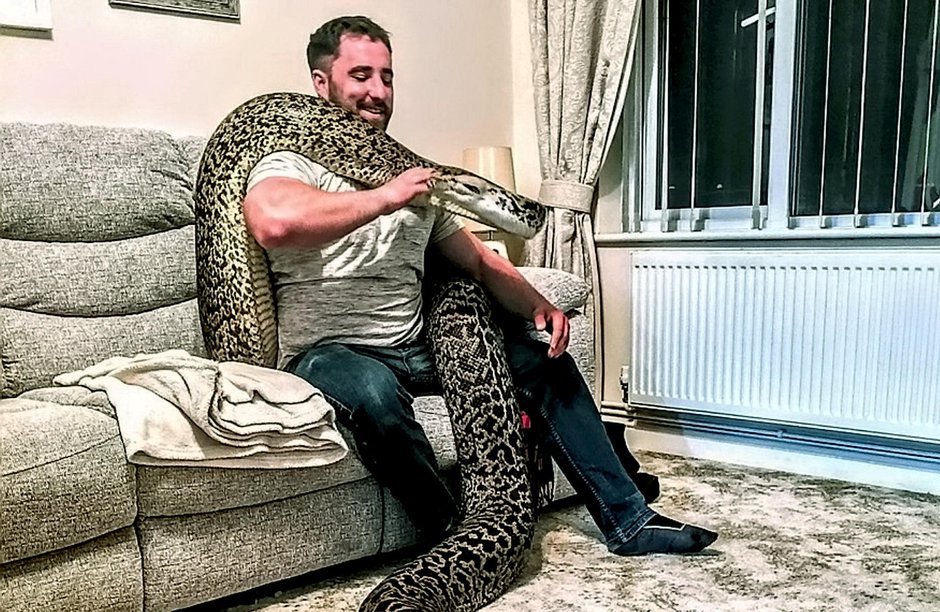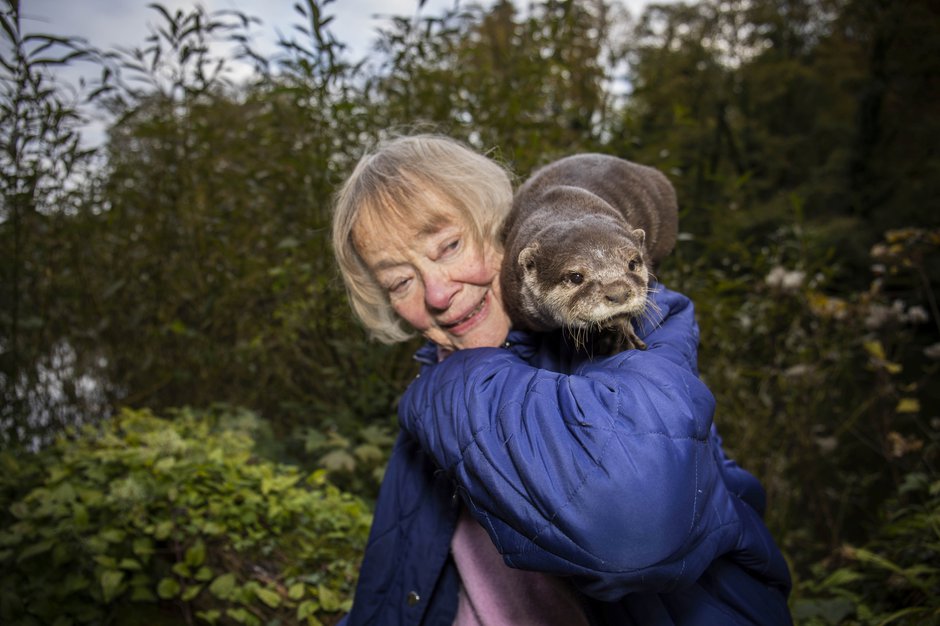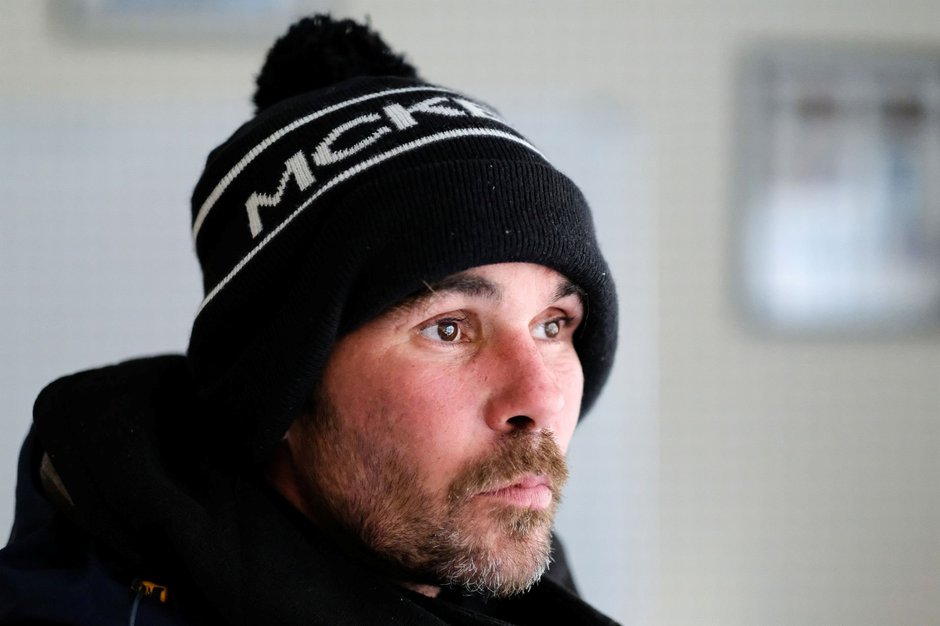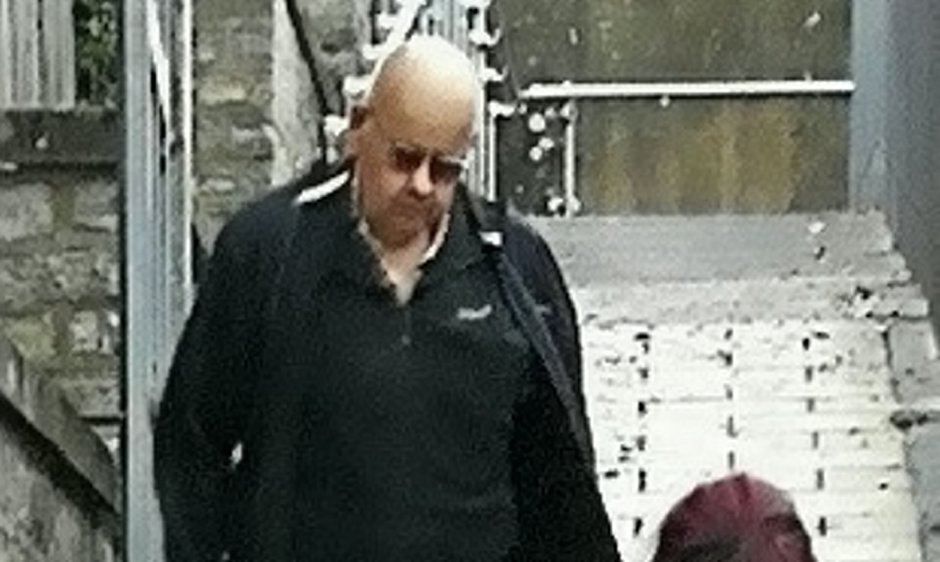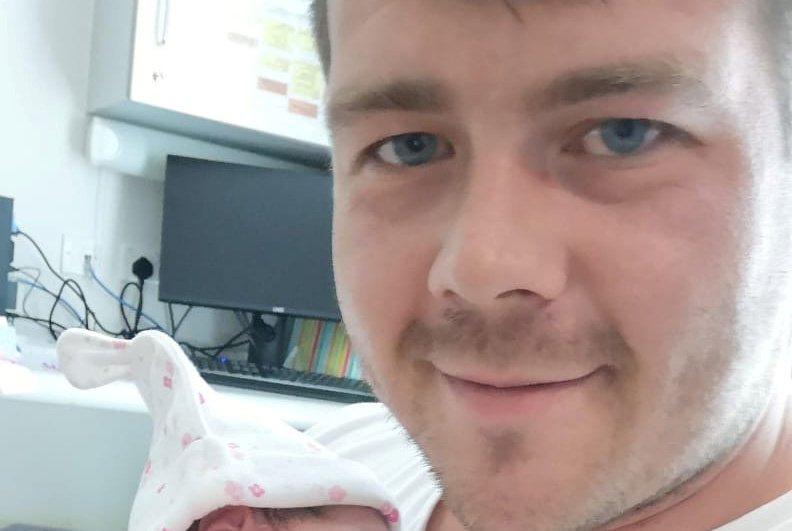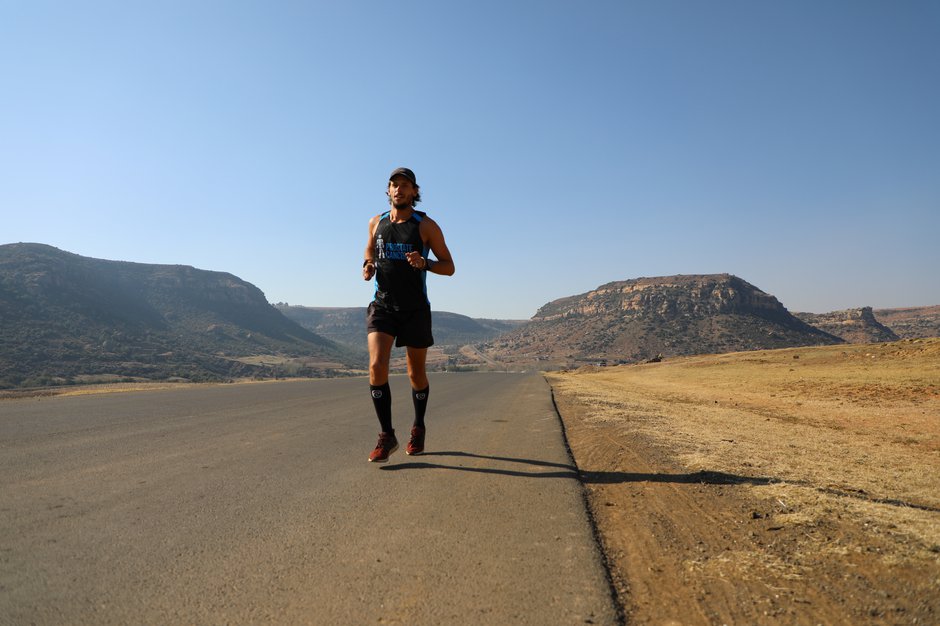A dad who bought an eight inch snake has seen it grow into the world's biggest ever Burmese python measuring over 18FT - and still keeps it in his terrace home
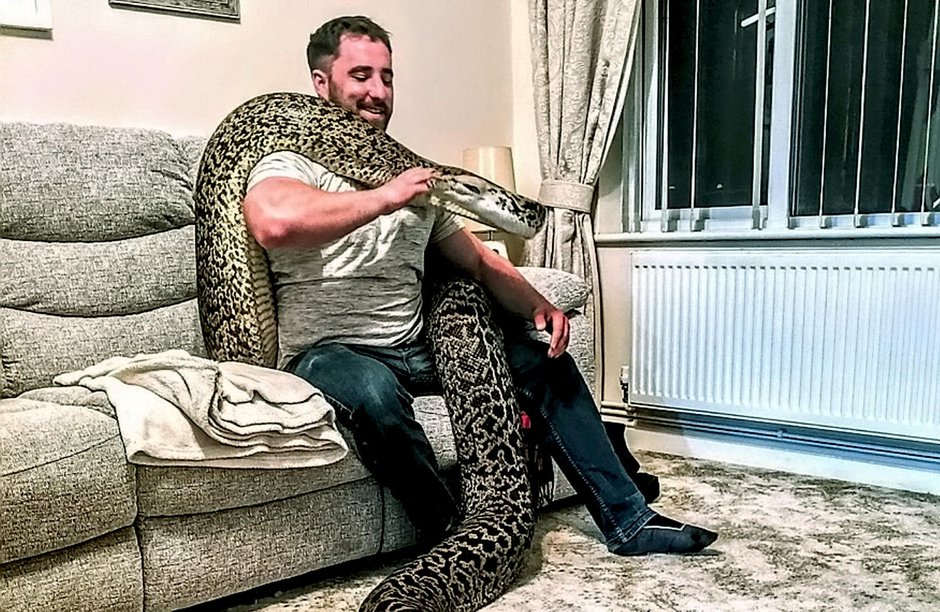 Image by: TM Gloucestershire Live
Image by: TM Gloucestershire Live
A dad who bought an eight inch snake has seen it grow into the world's biggest ever Burmese python measuring over 18FT - and still keeps it in his three bed semi.
Marcus Hobbs, 31, purchased Hexxie from a pet shop eight years ago - and watched it become a 110kg (17 stone) whopper.
He feeds the massive snake rabbits, stillborn deer, calves, goats and pigs supplied by local farmers - and it's still growing.
The animal is expensive to keep and could be lethal if mishandled - squeezing a human to death in minutes and swallowing them whole.
But IT worker Marcus is confident Hexxie will never strike - although doesn't handle her when the his sons, aged four and one, are nearby.
The whopping reptile eats and produces a chalky poo once a month - large enough to fill a bin bag.
Experts say the biggest ever Burmese python was 18ft 8ins but Marcus think Hexxie is even bigger.
He says when he last measured his pet of eight years she was over 18ft - and has grown a lot since then.
But he's reluctant to anaesthetise her for the official measurement until she’s stopped growing.
Marcus, of Tewkesbury, Glos., said: “I knew she would be big but she has shocked everybody by how much she has grown.
"I am very passionate about snakes and I try to help people understand them.
"I think people are so scared of them because they think they are going to kill them but if people come around I can talk to them all day long about snakes to reassure them.
“[But] I would not get her out with the boys around. I would only do it while they were in bed or another room.
“I don’t think she’d be dangerous towards them but you have to use your common sense and I’m a responsible pet owner."
He added: "I’m friendly with a reptile specialist and when I first got in contact with him to try and get some piglets for food he said: ‘What have you got?’.
"When I sent him a picture he said she was the biggest Burmese python he had ever seen, and he's seen them in the wild.
“He said: 'You have got to measure her for the world record’. I measured her and she wasn’t quite there yet but she’s grown a lot since then.
"She could be there now. There is a possibility she’s already a record breaker but finding out is not that easy."
Hexxie lives alongside another smaller snake, Monty, and the family dog Shiloh, a Husky.
Marcus said both snakes have gone for him before - although not for a while.
He added that the nearest Hexxie has come to attacking him was when he had to apply iodene to a skin infection.
He said: "She went for me. Not properly - more of a back off, get away type of thing. She’s nipped but she’s never latched on.
"Her mouth is full of of hundreds of pin shaped teeth like fish hooks. If she gets hold of you, you cannot pull your hand out because all the teeth are going the wrong way.
"You would have to push your hand back into her mouth to unhook her teeth. If you pulled you would be pulling her teeth further into your skin."
Marcus said Hexxie is laid back because she has grown used to being touched by humans over the years.
He said: "I handled her every day and a lot of people will not do that.
"I know people who have had snake from small and because it struck them a couple of times they have not done it again. Now they will never be able to handle that snake.
"You can’t have a snake that big that’s trying to bite you because it would mean you would not be able to go near her. Especially as she’s in a confined space.
"You would not be able to anywhere near that tank without her trying to get you.
"You have to be regimented because the only way to stop her biting you is handle her every day when she is young until she gets used to it."
Marcus needs to enlist the help of other people if he needs to move Hexxie whole but added that he knows how to peel her off, tail first if she starts to coil around him.
He cannot say for certain he’d have the strength to do so but explains that she would let out a loud hissing noise followed by a foul smell as a warning to leave well alone if she was stressed or unhappy.
He added: "I would not let it get to that stage."
Under pet laws there is no requirement for a licence to keep non-poisonous snakes and Marcus is sceptical of tales of much smaller Burmese Pythons escaping or killing.
A ten-foot one has been blamed for the death of a zoo keeper in Caracas, Venezuela previously.
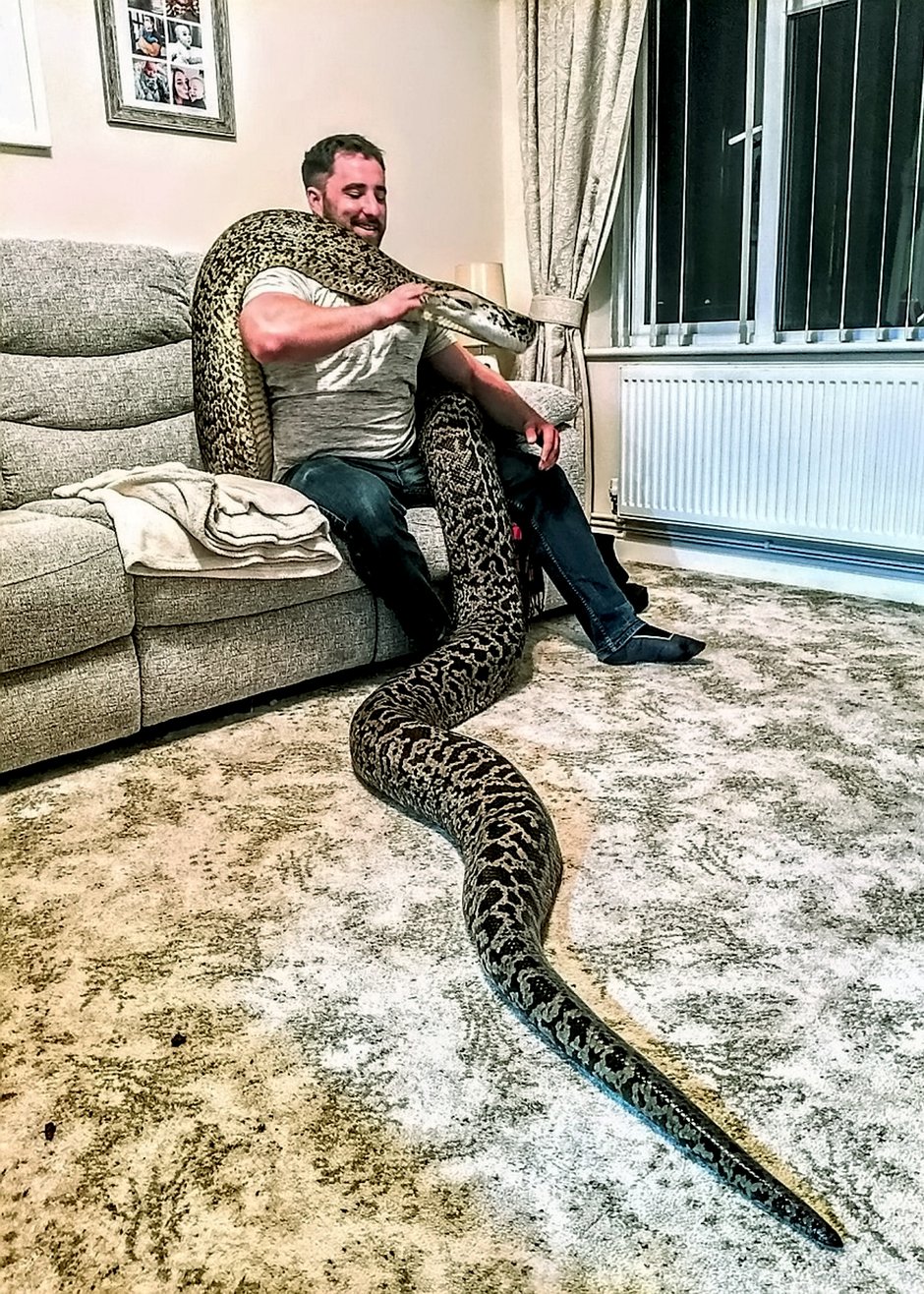 Image by: TM Gloucestershire Live
Image by: TM Gloucestershire Live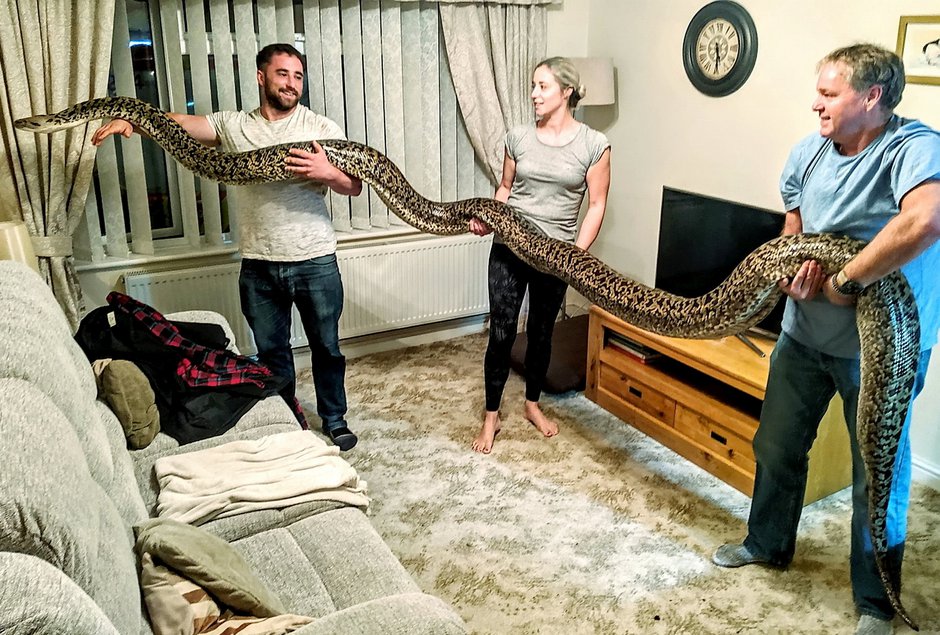 Image by: TM Gloucestershire Live
Image by: TM Gloucestershire Live
Marcus said: "A license would cost a lot of money and would not make any difference to people who are stupid or do not have any common sense.
"You couldn’t lose Hexxie. If I opened that tank door I don’t think she would even come out. She’s happy there, that’s her place.
"She’s nice and warm and doesn't want for much. Their brains are not like dogs. They don’t need excitement, they don’t suffer from boredom.
"That’s why they make such good pets. People think it’s cruel to keep them in the tank all time but they do not need or want to go far.
"If go to zoo they will have a bigger enclosure but you will not be able to see them because they will be curled up under a log.
''They don’t want to stretch out and they don’t like open spaces.
"They have simple brains. They want food water and heat. If they have all that they are happy."
Marcus paid £2,000 for the vivarium, £30 for each of the bulbs and the heating has to be constantly on full blast.
There’s also vet bills to consider and the stress of where to get food from.
Marcus caused stir when he put an appeal out on Facebook asking for farmers to donate any rabbits going to waste as food for Hexxie who can eat at least half a dozen at one sitting.
Marcus said: "Usually I have lab rabbits which are hard to get hold off and expensive but I know farmers shoot them as pests and a lot of times they get thrown away.
"People say they can’t believe I would ask such a thing but I wonder how many of them have cats or dogs. You don’t feed them carrots and broccoli, do you?
"I have never killed an animal and would never want to, but these things I have, they eat animals."
A local pet shop owner now puts him touch with farmers who can help.
Marcus had his first snake for his 13th birthday and believes it's down to watching Steve Irwin on the television.
He had royal python Monty for his 16th birthday and around a year later came home with George, a 7ft boa constrictor which later died, without telling his parents.
He said: “My family have always been into wildlife so I was always destined to get some sort of animal.
“But it’s snakes that just fascinate me. I can watch them all day long.
"When I was living on my own, years ago before I had children, if there was a power cut, I would put them in the bed with me to keep them warm.
"I would wake up in the morning and they would still be there."
Marcus met partner Amy, 31, while they both worked at a hotel in Cheltenham, Glos.
They eventually hooked up at a leaving do - and she quickly realised that it would be a case of "love me love my serpent".
She said: “I knew before we got together. We worked together five or six years before then and he always had that reputation.
“I was well aware they were part of his life...whether I liked it or not.”
Animal-lover Amy added that she was okay with reptiles, but said: "I’m more your fluffy, cute, type of animal person.”
Now the she understands her Marcus' emotional attachment to his slithering pets her main issued is how much household space they take up.
She said: “They carry a lot of stigma but they do grow on you.
"People don’t associate them with pets so they find it hard to make the comparison but you see them every day and get attached.
“If we didn’t have them I would miss them but I wouldn’t miss the space they take up.
"When we had our first it wasn’t too bad because we had a three-bedroomed, but when the second one came along we needed that third bedroom.
“Either the snakes went or we compromised the room downstairs. The snakes won and now I just accept that they are in our living room.”
The couple have bought their current house and are confident their neighbours realise they are responsible pet owners.
Marcus said: "We have not had a problem. If you think Hexxie's going to get out, get into your house, get into your bedroom and eat you while you sleep, then I think your imagination’s too strong.
"If door is closed there’s nowhere for her to go and she would not go upstairs. She just wouldn’t. It would not be worth her while. She wouldn’t need to, there’s no reason.
"If you knew anything about reptiles you would have a very different opinion.
"I would not lock a dog in cage. A dog needs exercise, a dog needs companionship, a dog needs its brain to be worked. A snake’s brain is not like that at all.”
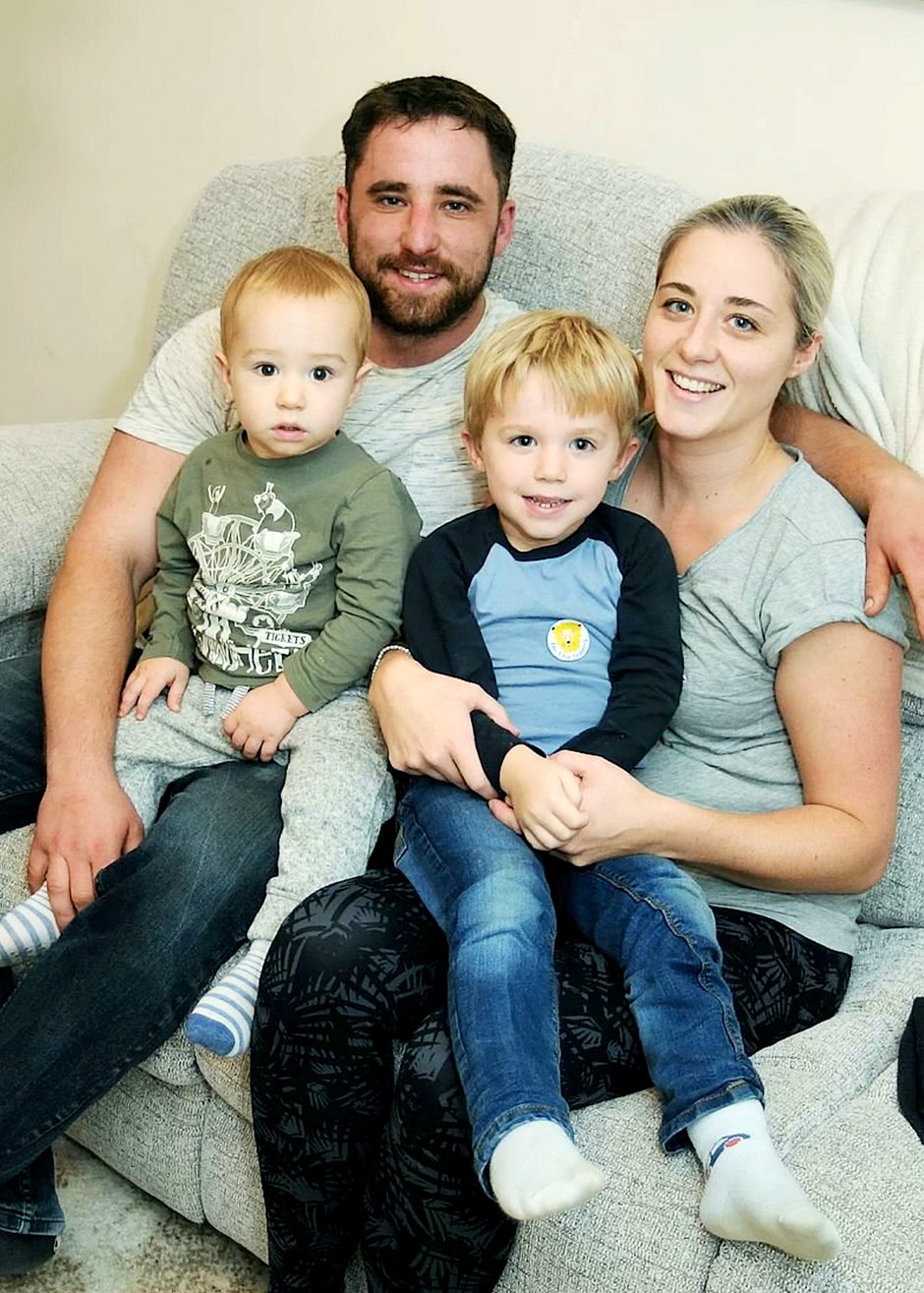 Image by: TM Gloucestershire Live
Image by: TM Gloucestershire Live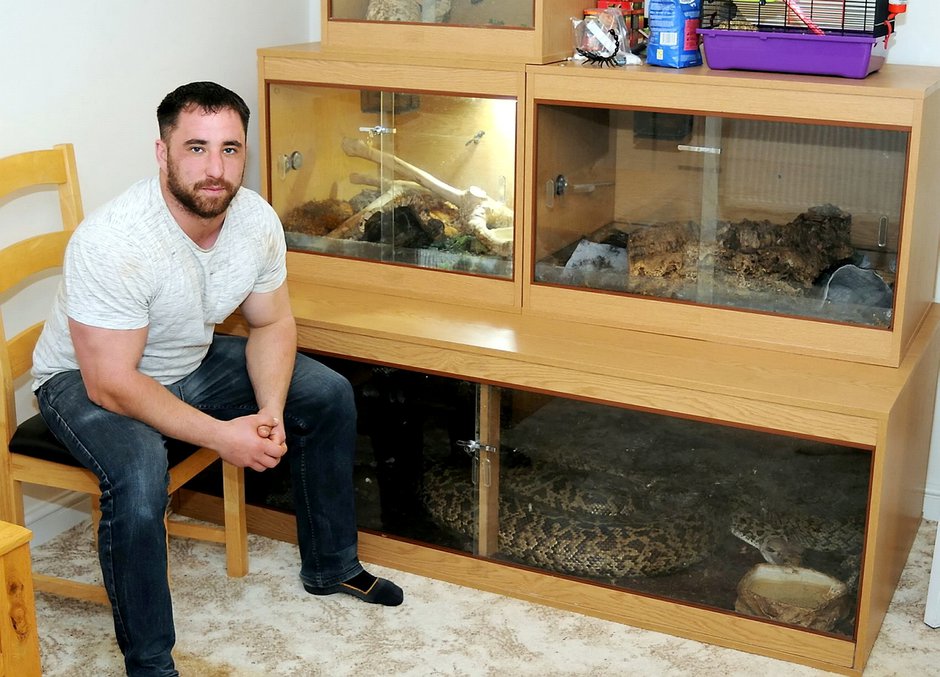 Image by: TM Gloucestershire Live
Image by: TM Gloucestershire Live
Marcus said he spends about £12 to £15 every four to six weeks on food but is given much of it for free.
He said: "I get a lot of stillborn lambs and deers. It's a couple of quid for rabbits."
Marcus said he feeds the animals to Hexxie whole - "guts and everything".
He said: "I have a bit of fun with it. I dangle it in front of her and pull it back so she thinks it's trying to get away.
''She eats six or seven animals in one sitting which lasts for about a month."
The Burmese python is housed in a six foot by three foot by three foot wooden tank with a glass front. in his living room not far from the family television.
Marcus said he spends "five minutes a day" taking care of the serpent.
He added: "It doesn't take much looking after. As long as they have got food and heat they are fine. They're extremely easy [pets]."
When asked what he would say to people who might criticise him for keeping a potentially lethal snake in the same house as his kids, he said: "She's in a locked vivarium with reinforced glass. It's very hard for her to go anywhere. She's always out only when they are out of the room.
"She wouldn't see the children as something to eat. She wouldn't like the smell. She doesn't associate the smell of humans to food. If she did she wouldn't be safe to keep."
Marcus added that he was "fully prepared" for the snake to grow to the size it has.
He said: "I've had reptiles for years. I wouldn't buy not knowing."
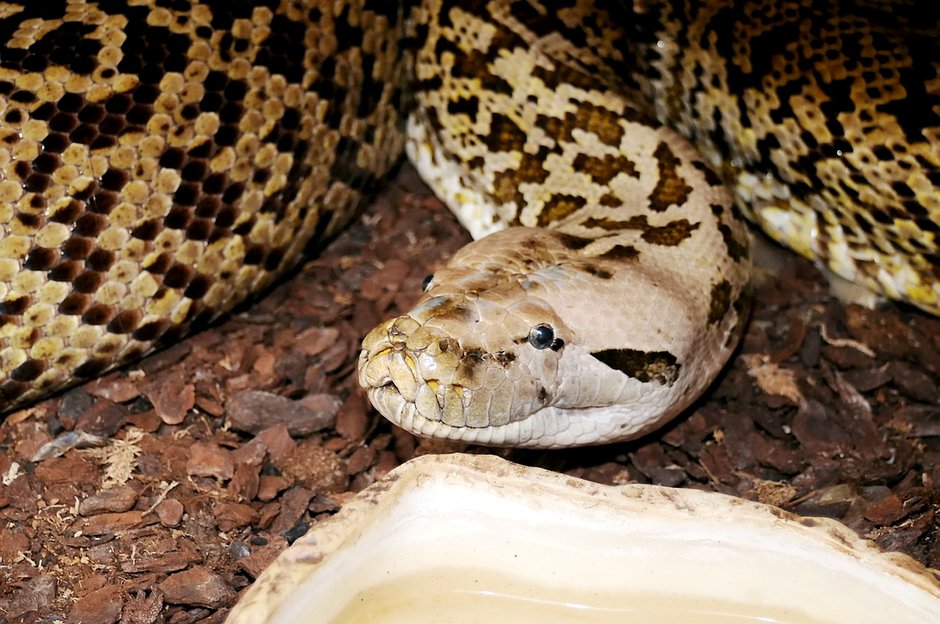 Image by: TM Gloucestershire Live
Image by: TM Gloucestershire Live
Charles Thompson, snake expert and owner of a reptile shop in Sheffield, South Yorks., said: "If they [Burmese pythons] are handled regularly they can be puppy dog tame - but that isn't to say there's no risk.
"I have no issues with people keeping giant snakes as long as they are geared up and have the correct equipment. It's all that zoos are doing. Keeping the glass locked is common sense.
"But to get it to 18-foot he would have had to cosset, love and adore that snake. He's obviously put a lot of time into it. There's no more danger than having a family dog. They [snakes] just have a specific set of problems.
"He could even let the children in the room - although I'm not saying they should handle it."
When asked about the record-breaking claims, Mr Thompson said such matters were difficult to answer conclusively.
He said: "It's one of them where somebody would have to raise their own head above the parapet and say otherwise."
Video by: TM Gloucestershire Live
OTTER-LY IN LOVE - Meet the animal-loving pensioner who has spent her life helping to raise OTTERS - and regularly walks around town with one sat on her shoulders
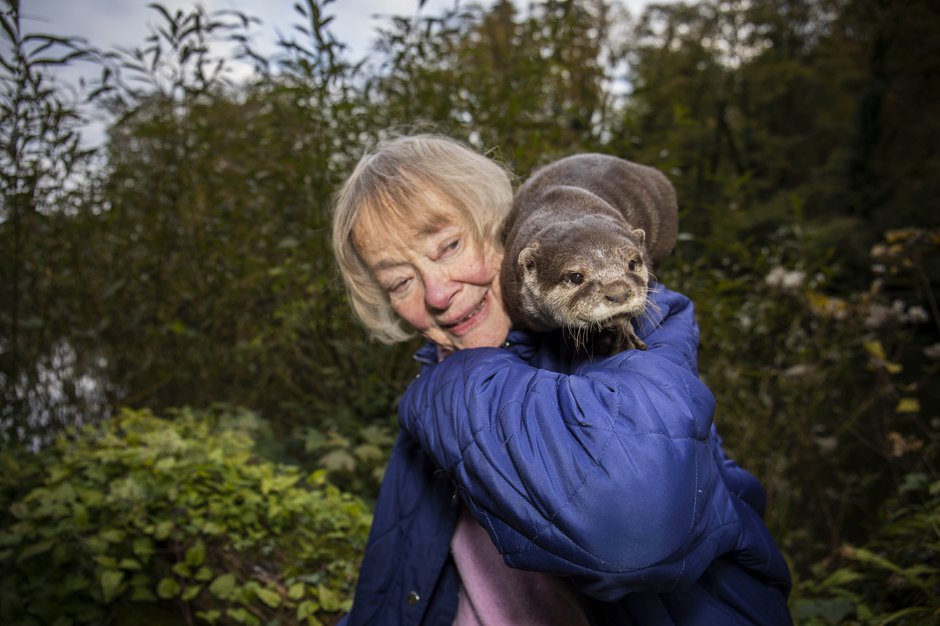 Image by: Jake McPherson
Image by: Jake McPherson
Meet the animal-loving pensioner who has spent her life raising pet OTTERS - and regularly walks around town with them on her shoulders.
Daphne Neville, 82, has kept the mammals for nearly 40 years and devotes her time to increasing awareness about the creatures.
She even takes her current pet, 'Rudi', to the shops - but said people don't mind because the otter looks "cosy and happy".
An actress by trade, Ms Neville adopted her first otter in 1980 after a friend suggested her 18th century converted water mill near Stroud, Glos., offered the perfect conditions.
'Rudi', her tenth otter, is extremely docile and is used in shows across the country.
The affectionate animal is licensed under the Dangerous Wild Animals Act 1976 because of his 36 sharp teeth, although Ms Neville said she has never had a problem.
She said: "With Rudi, I've had him since he was three weeks old. He thinks I'm his mum. I'm a part of him and he's a part of me.
"I've shown people you can have incredible bonds with these creatures. Touch wood, we have never had an accident.
"I wouldn't want to be a risk to anyone. All my otters have been immaculately behaved. I wouldn't dream of taking them out otherwise.
"We do shows all over the place. People come from miles away - especially from Australia and New Zealand. They don't have otters there."
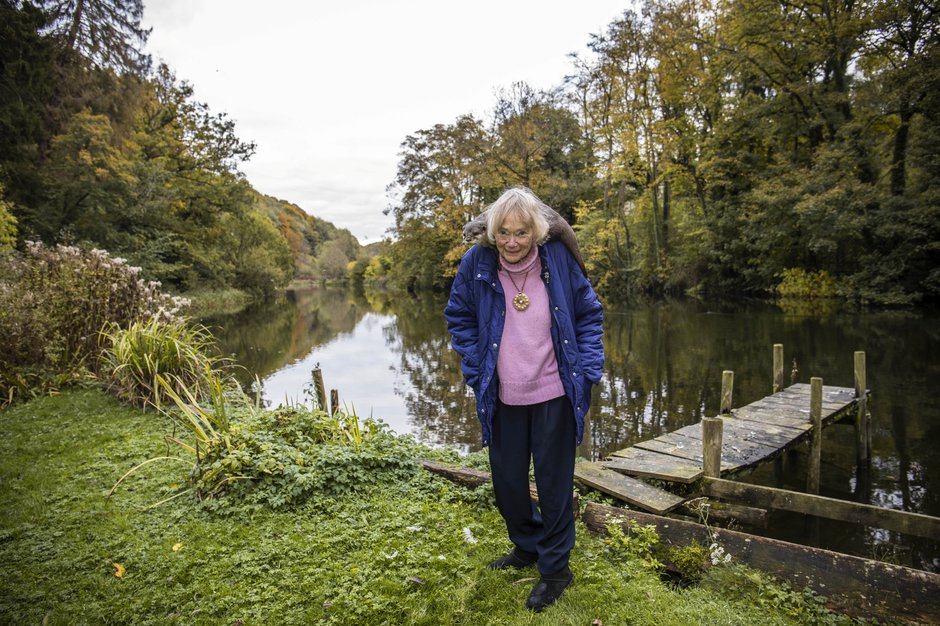 Image by: Jake McPherson
Image by: Jake McPherson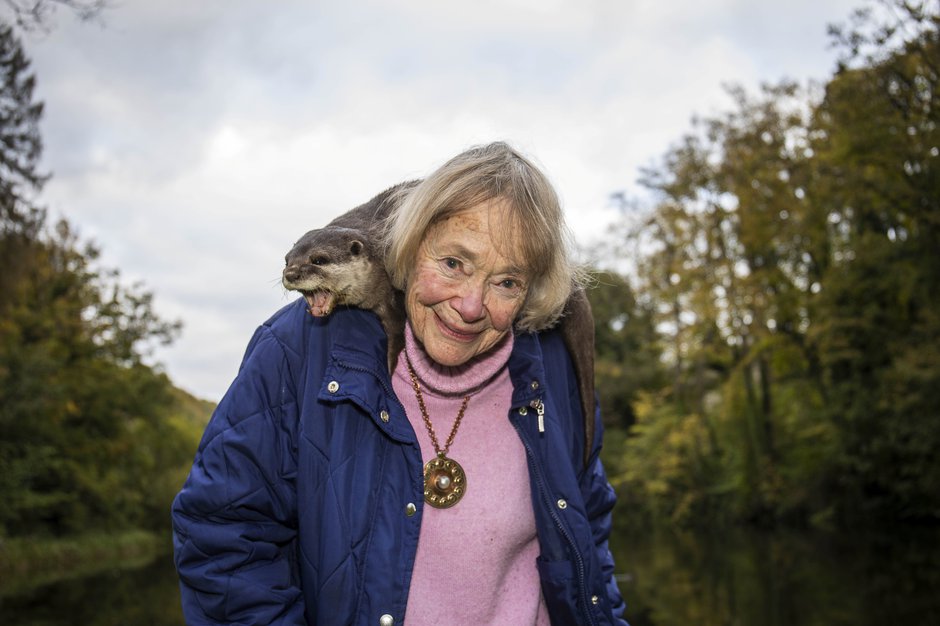 Image by: Jake McPherson
Image by: Jake McPherson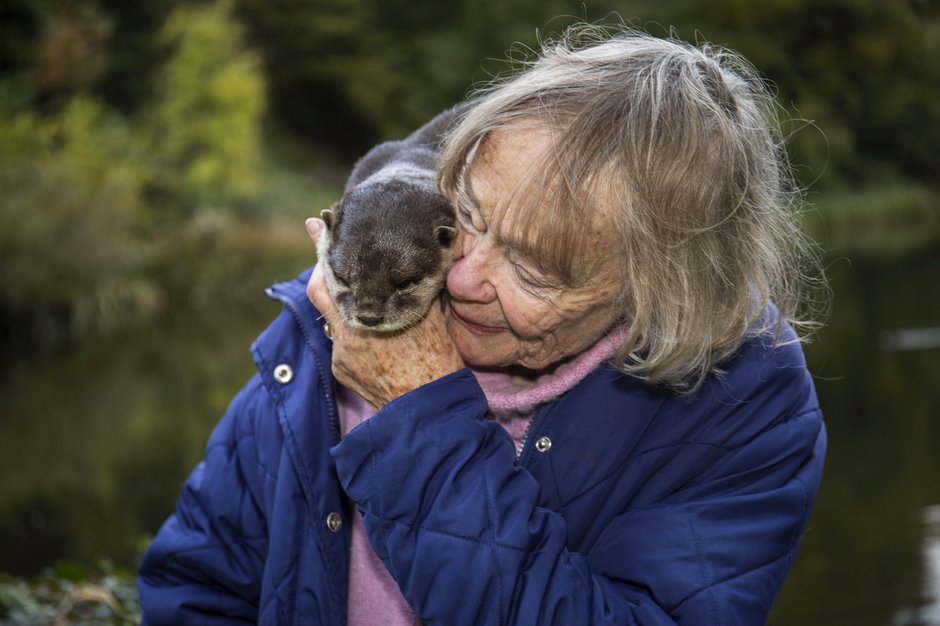 Image by: Jake McPherson
Image by: Jake McPherson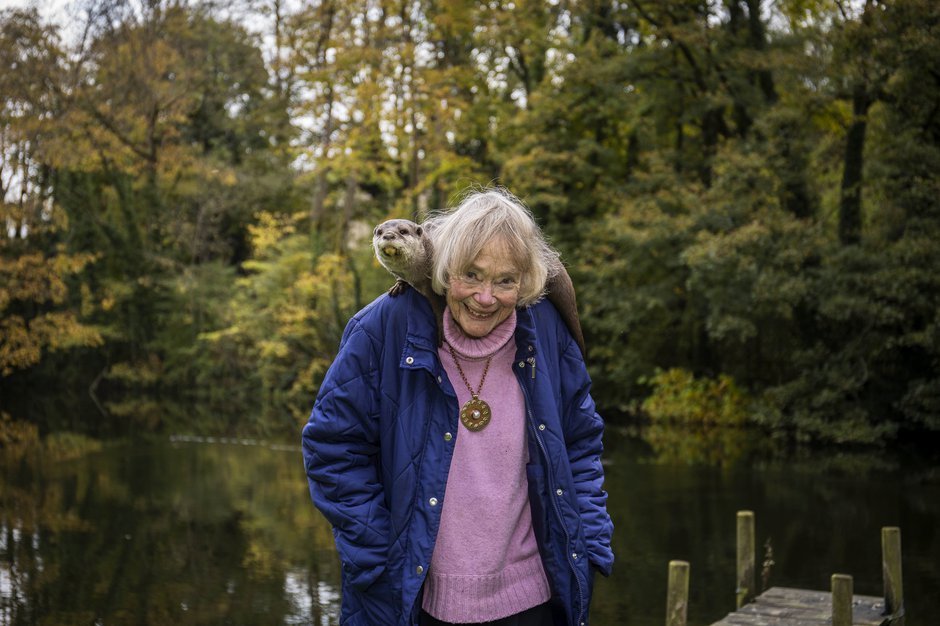 Image by: Jake McPherson
Image by: Jake McPherson
Ms Neville raised previous otters with her late husband Martin and three daughters, who have all now left home.
She also campaigned hard alongside big names such as the legendary Sir David Attenborough in years gone by to urge water companies to clean the country's rivers.
They had become so polluted with the chemical polychlorinated biphenyl (PCB) that the wild otter was almost extinct.
Incredibly, Ms Neville's actions prompted Michael Meacher, then environment minister under Tony Blair, to announce plans to phase out PCBs in 2000.
She said: "We didn't know anything about otters - we were just a normal family. But then we wanted to raise awareness about their future.
"We fought so hard for their safety. Clean water is pivotal for the future of otters and all living creatures. Since then [1980], the rivers have visibly improved."
Ms Neville is now supporting Animal Alerts, a small device which attaches to the front of cars and emits an ultrasonic sound.
This warns creatures like rabbits, dogs and otters not to cross the road as the car is approaching - potentially saving huge numbers.
She said: "It keeps them on the verge. Otters like to cross the road at night when they think it's safe."
When he's not on Ms Neville's shoulders, 'Rudi', an Asian small-clawed otter, lives in a large cage in the garden - where other otters can come and say 'hello'.
He performs in country shows, fêtes and children’s parties - including at Kensington Palace.
The pair have even appeared on the hit Channel 4 TV show 'Come Dine With Me', coming in second.
Ms Neville also keeps rescued swans, ducks and a goose on her lake.
Millionaire's son reveals he has been sleeping rough for over 20 years - since he was 15
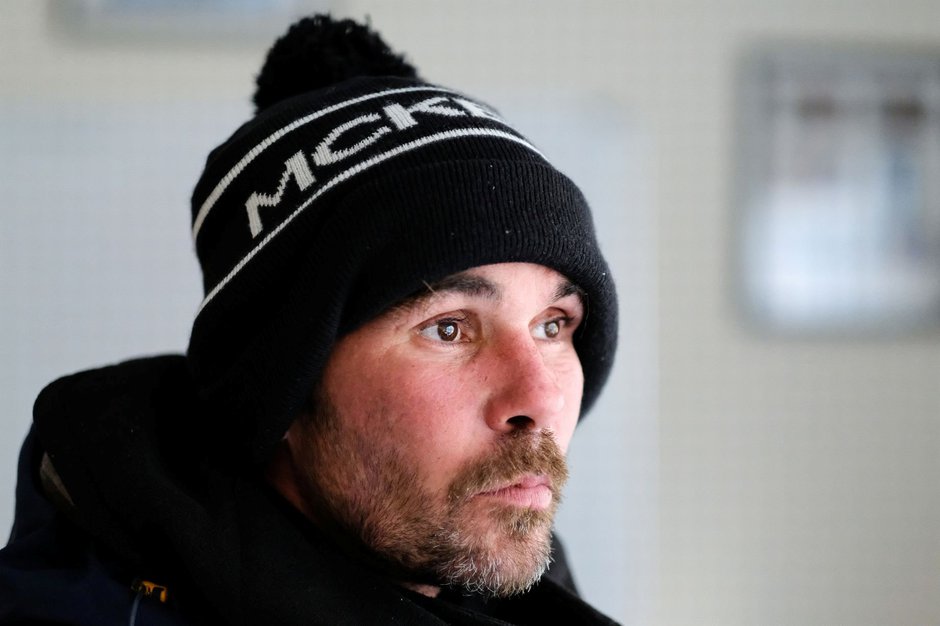 Image by: TM Cornwall Live
Image by: TM Cornwall Live
A millionaire's son has revealed that he has been sleeping rough for over 20 years - since he was 15.
Privately-educated Ryan Staffiere, 37, has spent most of his life living in car parks and public spaces despite his privileged upbringing and being given all the opportunity in the world.
He dabbled with drugs at the age of 11 and his life went downhill from there, to the point where his affluent parents had no choice but to kick him out at 15-years-old.
Since then, Ryan has been living rough in Truro, Cornwall, and is now facing another Christmas on the streets.
He said: "My parents were millionaires. My family owned holiday cottages and I went to a private school. I’m a good boy gone wrong.
“I was kicked out when I was 15. I’m not thick, I just love the party scene. Now I’ve been on the streets, on and off, for about 21 years."
Ryan is a familiar face at a local homeless charity's resource centre, and is a favourite with the staff at St Petrocs Society.
They describe him as polite, kind, well spoken and clearly highly educated, taking the time to say thank you to every kind gesture.
But he admits that he’s no angel, with 93 convictions on his record and earlier this year he hit the headlines after demanding that police gave him a taxi ride home.
He says it’s been all down to drink and drugs.
Ryan added: “I was mixing with people that were using. It became a serious problem in my 20s, more than the drink was.
“I had a few girlfriends and lived with them but I was still on the drink and drugs. They were toxic relationships.
“I was a heroin addict when I was 20. When I was 25 the crack cocaine came down here. I got into it and then it’s just been a downward spiral ever since.”
Ryan often sleeps in a car park in Truro, in an effort to stay away from the weather.
He added: “I used to stay in car parks but I wouldn’t sleep. I just used to walk around at night; I was too scared to go to sleep.”
“You just get used to it. It’s no different to being a sparrow. They live outside every day. They don’t moan about not having central heating. Someone gives him a pasty and he’s chuffed.
“The worst thing is getting wet. You have to know where to go when it’s raining to keep yourself dry."
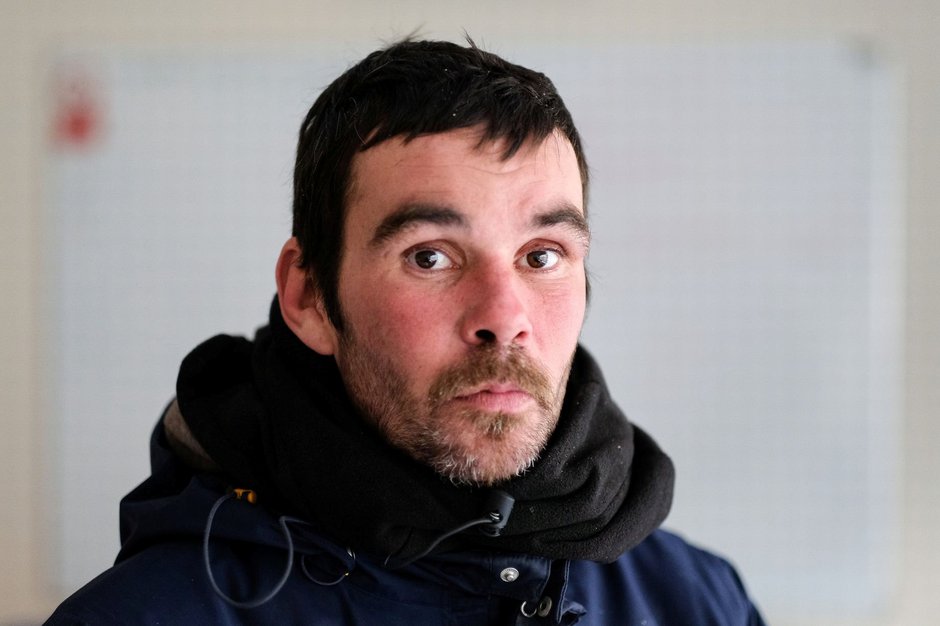 Image by: TM Cornwall Live
Image by: TM Cornwall Live
For most of us, the festive period is a time to celebrate and Ryan is no exception. I love it,” he says. “People are so kind.”
But the kindness from others has got him into trouble.
“Last Christmas I got banned from my mum’s house,” he says. “Someone had given me a bottle of tequila, a bottle of vodka and a bottle of brandy.
"I drank them all that day. My mum wouldn't let me in. I still see them. They don’t like my lifestyle but they have me round for a cup of tea and cook me a meal."
This year, Ryan has reached something of a turning point and next month he is due to start rehab. He hopes it will be third time lucky.
He added: “I will be in rehab and spending Christmas with the homeless. That’s what I want to do,” he says.
Ryan is currently living in a B&B and has enrolled on various courses, which have helped boost his confidence and given him a sense of purpose.
“Two years ago I was happy injecting heroin and smoking crack. I couldn’t get a f**k that I was on the streets, I couldn’t see a future for me,” he says.
“The course have given me something to do and opened my eyes. There’s more to life than just existing.
“I’m not sat on the streets begging, trying to get a tenner for crack.
“I go shopping every week. That’s something I haven't done before. I buy myself new clothes.”
“I’ve got courses lined up. I want to be an advocate for homeless people. I could take them to doctors appointments and things like that.
"I would volunteer at first but that’s what I want to do as a job.”
There’s one thing that motivates Ryan more than anything else, he has a 10-year-old little girl who he is not in contact with.
Her mother, Ryan's ex-partner, died from an overdose and his daughter currently lives with family members outside of Cornwall.
Thinking of their future, Ryan added: “I want to get a little flat and get a dog and learn to drive. I want to get a job.
“When she grows up she can say my dad didn’t do well when he was younger but he’s tried his best.”
RUFF RIDER - Meet the real Hairy Biker ...Rocket the motorcycle dog
 Image by: Chance McBride
Image by: Chance McBride
Rocket the dog loves nothing more than motorcycle cruising on the open road - perched on the shoulders of his owner.
The three-year-old Shiba Inu - named after a character from ‘Guardians Of The Galaxy’ - began riding with owner Chance McBride when he was just five months old.
He now rides on Chance's back in a special rucksack for carrying dogs, or rides pillion in a bespoke pet seat.
Chance, of Phoenix, Arizona, said: "I started training Rocket when he was 5 months old to ride the motorcycle.
"I put a towel on my gas tank and used a leash tied around my waist latching it to Rocket's harness.
"We would do small rides around the neighborhood. We did this on the weekends for a few weeks and he loved it so I bought him a 'Kuryakyn Pet Palace'.
"It's a great carrier that is meant for dogs and motorcycles."
Chance got Rocket after suffering a Traumatic Head Injury (TBI) three years ago.
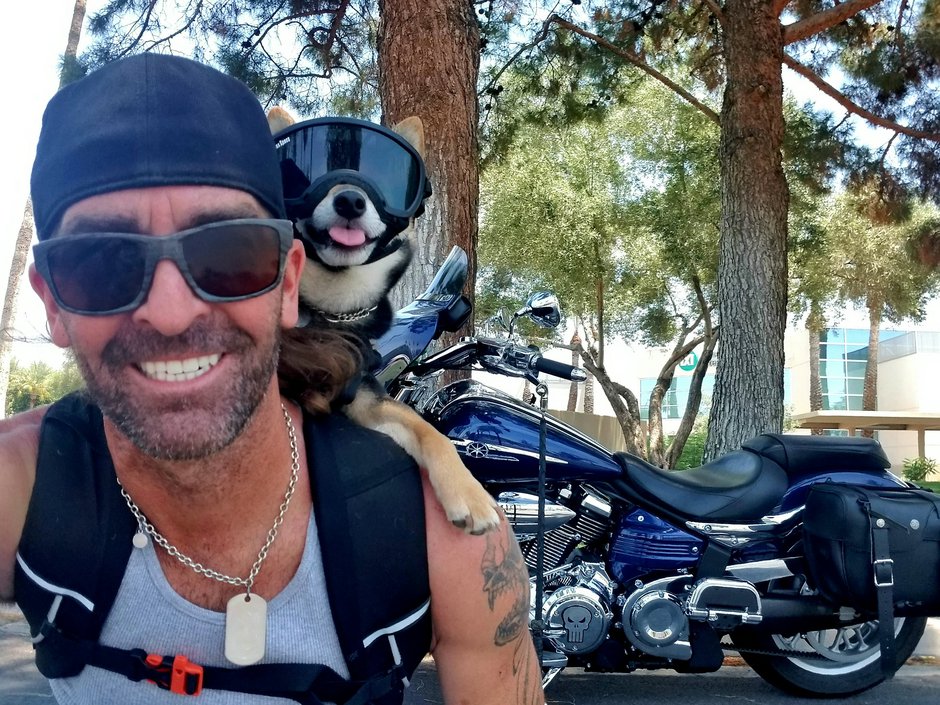 Image by: Chance McBride
Image by: Chance McBride Image by: Chance McBride
Image by: Chance McBride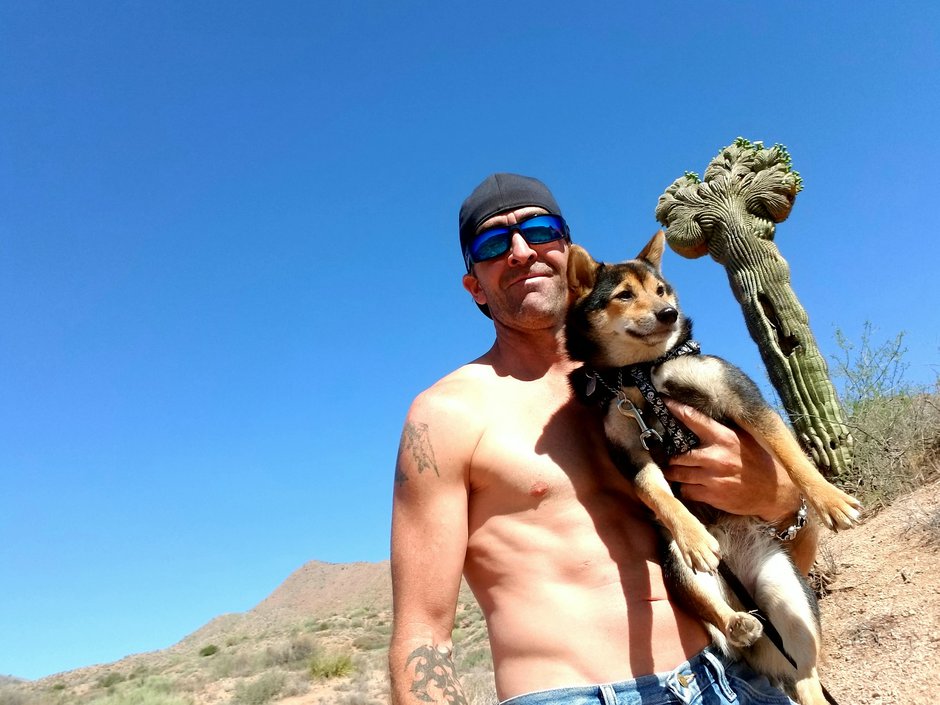 Image by: Chance McBride
Image by: Chance McBride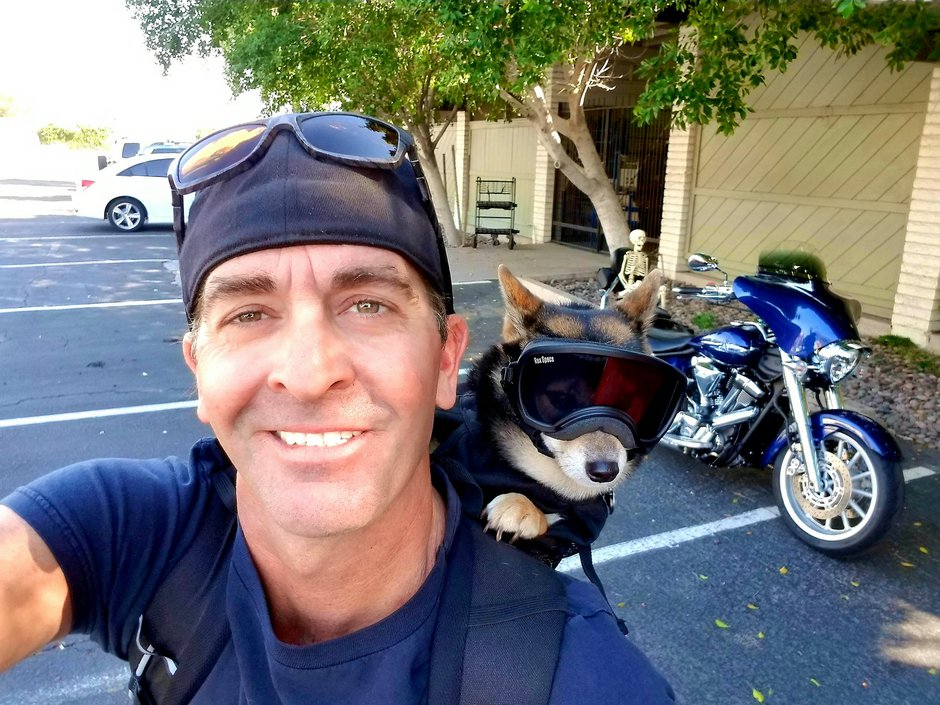 Image by: Chance McBride
Image by: Chance McBride
He explained: “I’m not good with people after my TBI so I would go on rides by myself a lot.
"My wife and I moved to Arizona from Colorado so all my friends and family were miles away while I was dealing with my TBI.
"Getting Rocket was a great emotional help, he and I are very close and he helps me with my TBI issues.
"I love spending time with him and riding motorcycles, so we ride pretty much everywhere together.
"I have met a lot of people at gas stations, stores, and even at red lights due to Rocket, he is a great ice breaker.
“I love to see rocket enjoying riding as much as I do. No matter how bad my day is he can make me smile.”
The pair have even completed a 2,600-mile ride from Arizona through New Mexico, Colorado and Utah which took two-and-a-half weeks.
Chance added: “I now have a K9 Sports sack for him so I can easily take him with me running errands or to just get out for a bit.
"My wife now can ride with us on the bike when I use the sport sack. And now a friend their family has moved to Arizona so we all get to go riding together.”
Video by: Gabriella Petty
A man threatened his wife in a row over a large electricity bill - run up by his girlfriend who lives in a caravan on their farm, a court heard
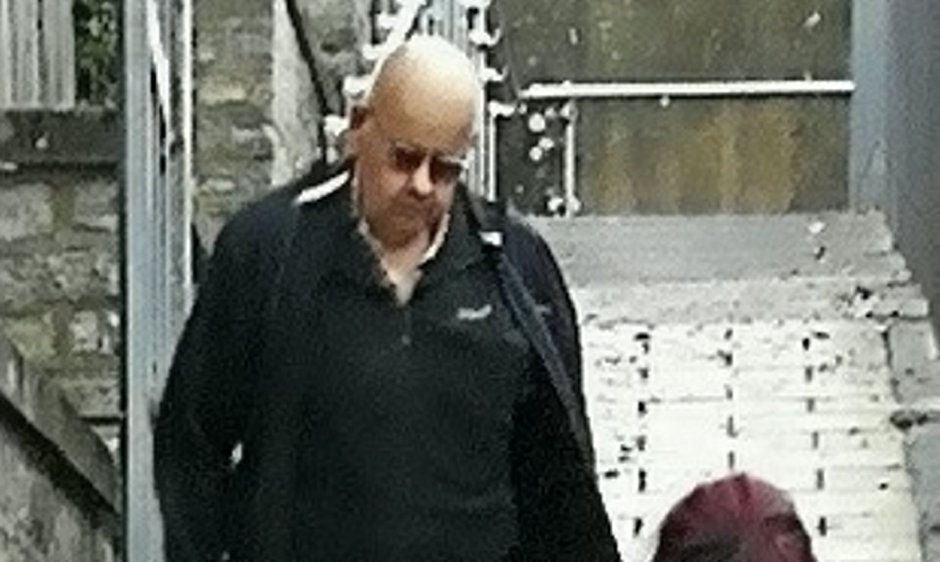 Image by: Deborah Gingell
Image by: Deborah Gingell
A man threatened his wife in a row over a large electricity bill - run up by his girlfriend who lives in a caravan on their farm, a court heard.
Arthur Grinter, 75, would visit Emma Ismay for ''kissing and cuddling'' in the mobile home every night after dinner - then go back to the house and family to watch TV.
During a row he complained the farmhouse's energy statement had reached hundreds of pounds - pointing the finger squarely at his wife and daughter.
But when his spouse Barbara pointed out the new woman was not contributing he flipped - raising a bread knife above his head.
He was found guilty of assault at Yeovil Magistrates Court and was given a restraining order banning him from the farmhouse.
It means Grinter, of South Petherton, Somerset, must now live permanently in the caravan with his lover.
Barbara told the court: ''I found out about a week later that they had been having an affair and we separated but still lived together at that point.
"On that day he came back to the house and was moaning that me and our daughter had a light on and saying that he had a big electric bill.
"He then helped me wash the dishes and was pushing my stomach up against the sink with his body and was still moaning about the electricity.
"I told him why should I have to pay for it when his girlfriend is not paying anything at all while staying on our land.
"He then turned violently and out of the corner of my eye I saw a bread knife and he said to me 'I’ve f***ing had enough of you lot'.'''
The court was told Barbara believes her husband was having an affair.
But he told the court they were “just good friends and did a bit of kissing and cuddling”.
He said: “I go to her caravan every evening because the atmosphere was better there than at home.
“I would come home after work, make a cup of tea and then go and see Emma before coming back to the house and putting my feet up to watch TV.”
He said: “I noticed the fan on and seven electric light bulbs and asked them why all this electricity was being burnt. It was ridiculous.''
He shouted "I've f***ing had enough of you lot" and advanced across the kitchen - before his daughter Natalie intervened and knocked the blade from his hand.
Barbara said: ''I could feel he was starting to get agitated and I then saw the knife in his hand and my daughter came rushing across and got it out of his hand and it fell to the floor.
"My daughter managed to get him off me and I picked up the knife and put it in the sink and I then picked up a saucepan but put it on the hob and didn’t touch anyone with it."
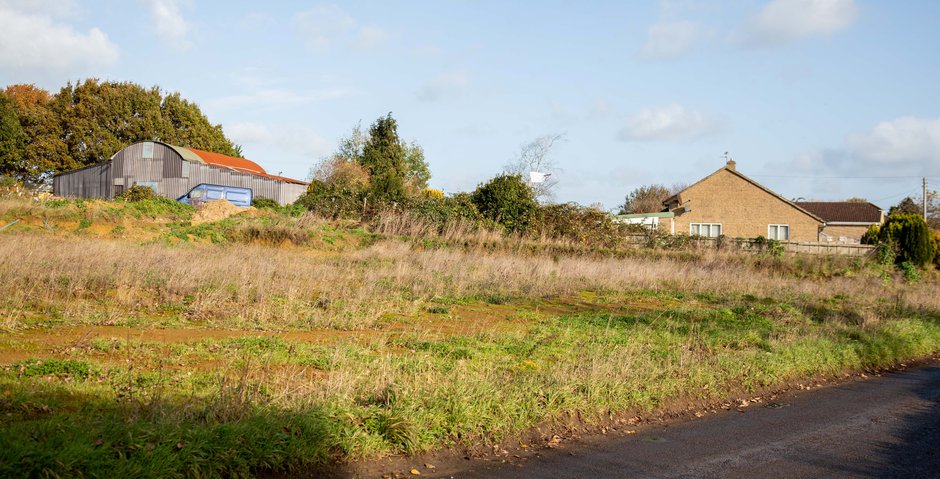 Image by: Tom Wren SWNS
Image by: Tom Wren SWNS Image by: Deborah Gingell
Image by: Deborah Gingell Image by: Tom Wren SWNS
Image by: Tom Wren SWNS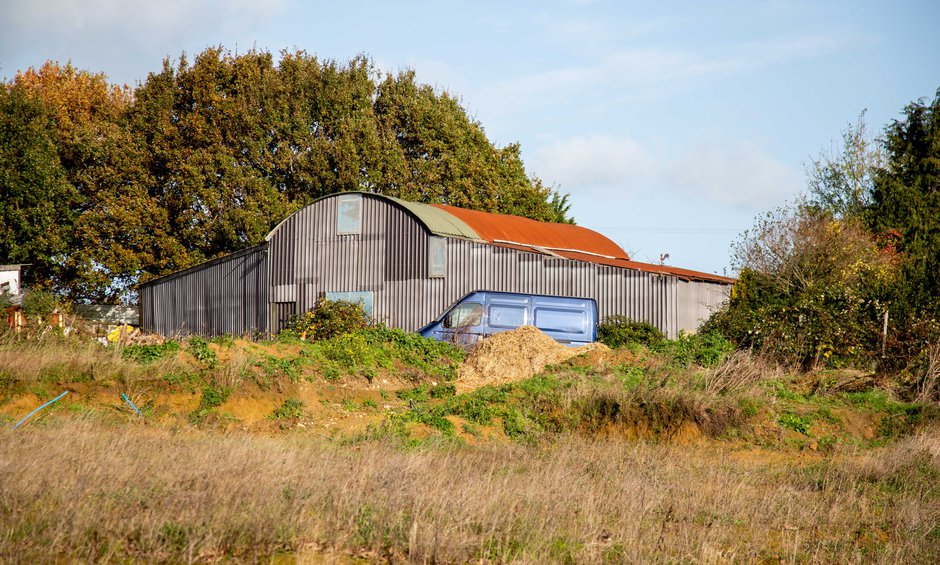 Image by: Tom Wren SWNS
Image by: Tom Wren SWNS
The defendant’s daughter also gave evidence and said that she became aware of her father’s relationship with Miss Ismay in April this year.
On the day in question she said her father had been complaining about the electric bill.
She said: “When he picked up the knife he rose it above his head and I then knocked it out of his hand as I was worried abut what he was going to do.
“I was pushing him away and had one hand on his chest and another on his face and just pushed him out of the way and away from my mum.”
She denied an allegation from Grinter that she had punched him during the altercation.
When the defendant was interviewed by police he said there had been “a bit of a fight” and his daughter had been “a bit of a b*gger” for turning up the fans and putting the lights on.
Giving evidence, Grinter said he came over to the farmhouse for his tea, watched some TV and helped his wife wash the dishes.
He said that when he complained about the electric bill his wife called him a “tight c***” and said that Miss Ismay didn’t pay anything towards the bills.
He said he had not tried to push his wife against the sink but had just gently squeezed past her as he was drying the dishes and also denied picking up a knife.
He then said his daughter came and attacked him, giving him a punch, and he had no idea why.
He said his wife then picked up a saucepan and threatened to hit him over the head with it.
“She’s got a filthy temper and a filthy mouth to go with it, although she never actually hit me with the saucepan,” he said.
Miss Ismay also took to the stand briefly where Grinter asked if they were lovers and she replied “no”.
The defendant then became emotional and tearful and could not bring himself to answer any more questions.
Chair of the magistrates, Beverly Higgs, said that evidence provided by Mrs Grinter during the trial had been “calm, credible and consistent.”
Her daughter corroborated the sequence of events and both described an argument and said that Mr Grinter had shoved his wife and had picked up a knife.
They told the defendant his evidence had been “muddled and vague” and had seen no evidence of any injuries to him.
She said: “We are sure that the evidence provided by the Crown Prosecution Service was the more plausible and credible account and we therefore find you guilty of common assault.”
A victim impact statement made by the victim outlined that she was not well and she was scared this stress would affect her health further.
She said: "He has changed since Emma moved on the farm and am scared for me and my daughter’s safety.
"His actions have had a very big impact and I feel like I’ve been made a prisoner in my own home as they release their dog which is vicious and it stops me walking around the house and garden.
"I feel I am at my wits' end and have found it all too much and just want everything to stop and want to get on with my life."
The magistrates fined Grinter £300 and ordered him to pay £500 towards the costs of the trial and a £32 victim surcharge.
They also made a 12 month restraining order during which time he must not contact his wife or daughter directly or indirectly except through solicitors to sort out property matters and must not enter the farmhouse at Parkway Farm in South Petherton.
HERO DAD - A dad who died after a bleed on the brain has been dubbed a hero after he saved the lives of FIVE people by donating his organs
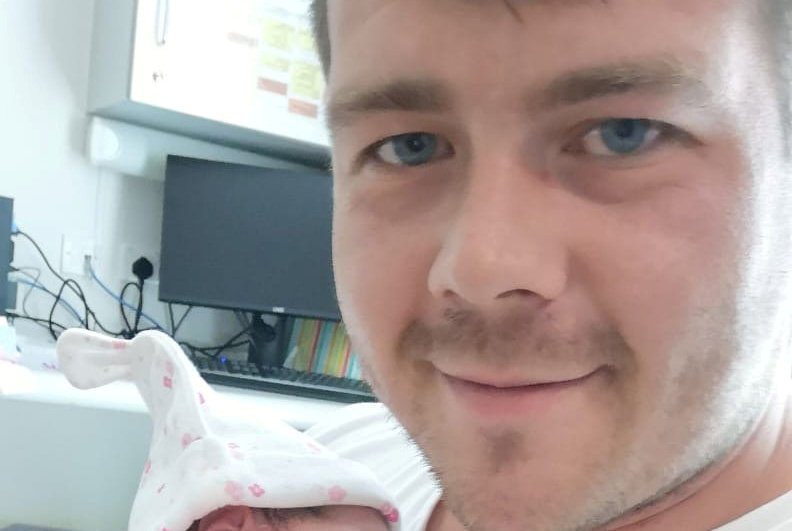 Image by: Gemma Ashdown
Image by: Gemma Ashdown
A dad who died after a bleed on the brain has been dubbed a hero after he saved the lives of FIVE people by donating his organs.
Jonathan Ashdown, 27, donated his heart, pancreas, kidney and his liver - after it was split in two - following his death.
The dad-of-three suffered from a tangle of blood vessels connecting arteries and veins, which caused a bleed on the brain.
He was diagnosed just five days after the birth of daughter Willow, and despite two brain operations died just two months later.
Devastated wife Gemma, from Tonbridge, Kent, made the brave decision to donate his organs to help others.
She has now been told in a moving letter from the Blood and Transplant Service how his organs saved the lives of four men and a young boy.
Full time mum Gemma said: "We are absolutely heartbroken at Jono's death.
"He was so young and had so much to live for. It's hard to imagine how we're going to go on without him, but it brings us so much comfort to know how many people he's gone on to save.
"When I saw the letter from the donation organisation it filled me with pride.
"I'm so happy Jono has such an incredible legacy - as such an amazing dad, I'm especially thrilled about the fact that he helped a little boy."
Tree surgeon Jono - dad to Emily-Jasmine, eight, Oscar-John, 17 months, and Willow, 14 weeks - started getting splitting headaches in July.
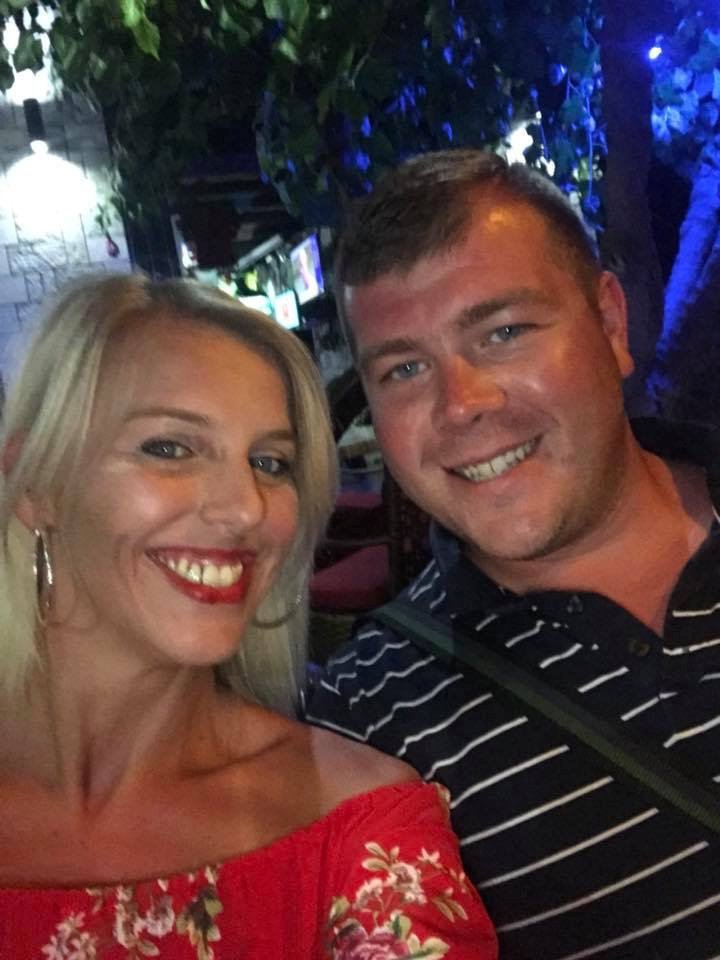 Image by: Gemma Ashdown
Image by: Gemma Ashdown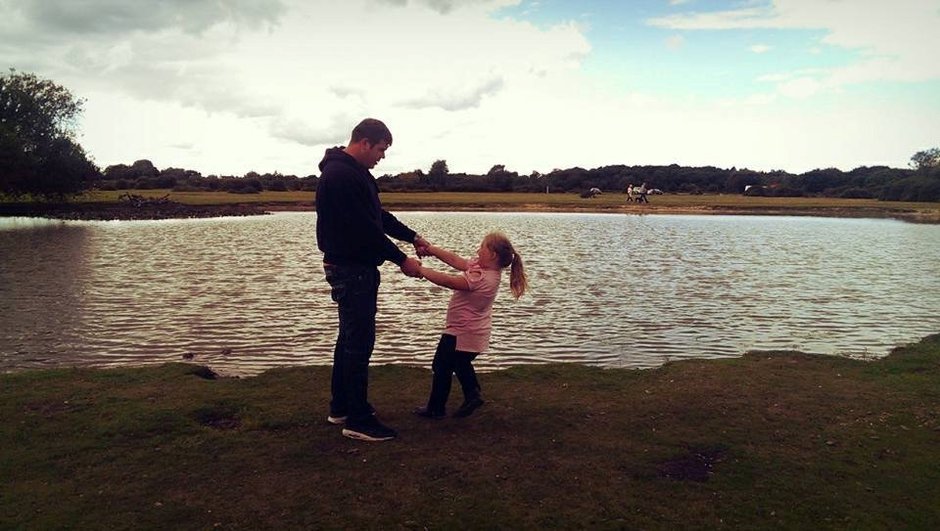 Image by: Gemma Ashdown
Image by: Gemma Ashdown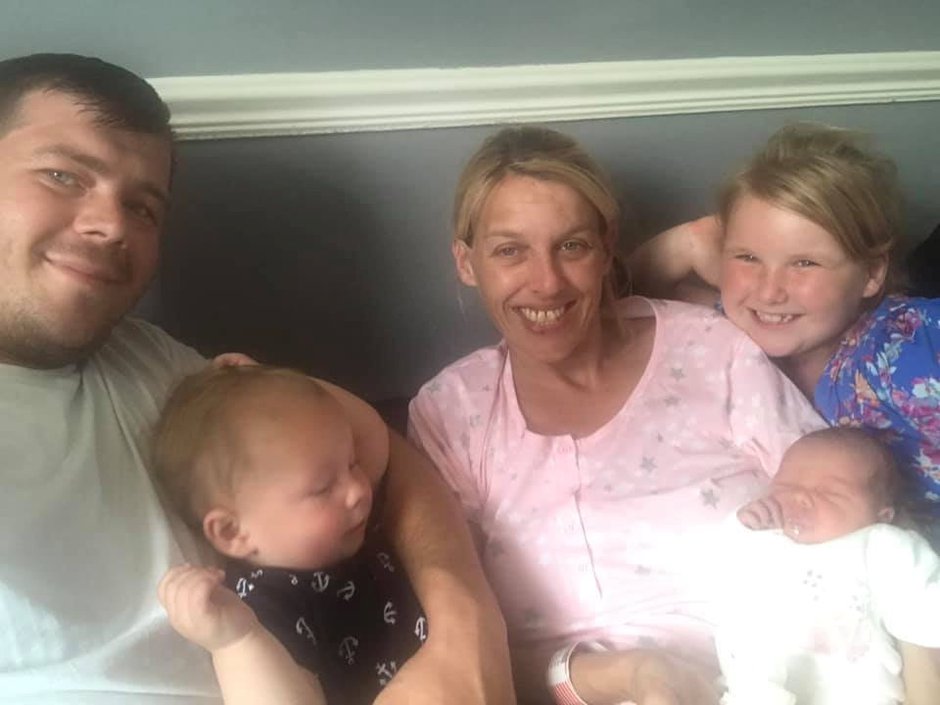 Image by: Gemma Ashdown
Image by: Gemma Ashdown
He sought the advice of his doctor and went for a scan at Tunbridge Wells Hospital that same month.
Medics revealed he was suffering from a bleed on the brain which had been caused by a tangle of poorly formed blood vessels known as arteriovenous malformation (AVM).
He was diagnosed on July 14th – just five days after the birth of baby Willow.
The former Tonbridge Juddian's rugby player had just celebrated his second wedding anniversary with his wife, Gemma.
Gemma said: "He had so much to live for.
"He was such a good dad - and so hands on with our newborn.
"We were looking forward to being back at home, as the family that we had always imagined, with our three lovely kids."
In the two months after his diagnosis, Jono had two serious brain operations to try and stop the bleed.
But the operations weren't a success, and he passed away on September 2.
Jono had discussed the possibility of donating his organs with Gemma - who initially wasn't sure if it was a good idea.
But after visiting a chapel with Jono’s father and discussing donation, Gemma went outside for some air and bumped into a group of people promoting organ donation.
She felt it was a sign and agreed.
Gemma said: "The only part of Jono that I didn’t want to donate were his beautiful, bright blue eyes.
"I saw a child in hospital once who had scolded himself and needed a skin graft. This really made me think.
"I don’t think anybody should have to suffer without the organs they need and my Jono has helped with that."
She received a letter from the NHS on 14 October saying a kidney and his pancreas went to a man in his 40s who had been waiting for three years.
Another kidney went to a man in his 50s waiting for a decade, and his liver was split between a young boy and a gent in his 50s.
The "very precious and especially rare gift" of his heart went to a man in his 60s.
His family also donated his soft tissues, yet to be donated, and currently being stored for future patients.
 Image by: Gemma Ashdown
Image by: Gemma Ashdown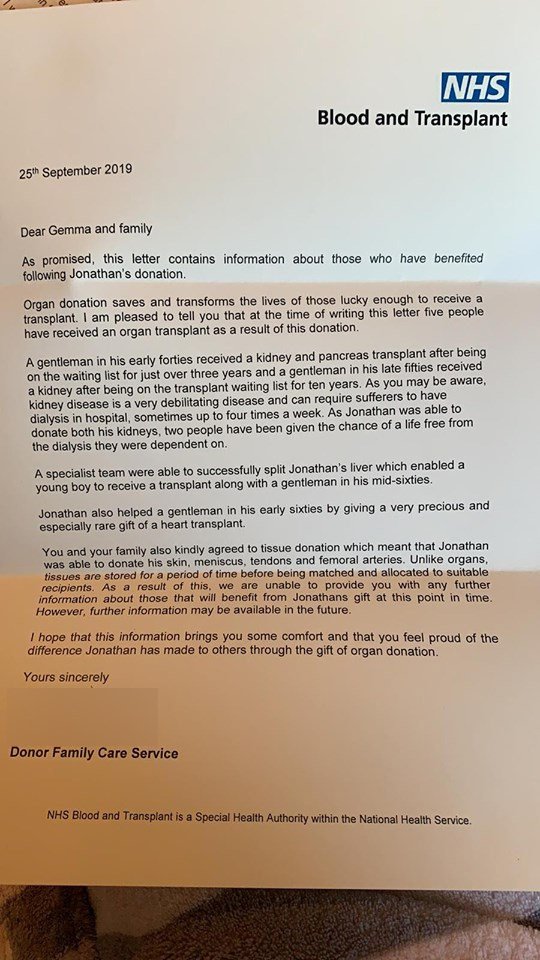 Image by: Gemma Ashdown
Image by: Gemma Ashdown
Gemma shared the letter on October 14 on Facebook - on what would have been Jono's 28th birthday, and it went viral, attracting 65,000 shares.
Gemma said: "He was truly amazing.
"Our lives are never going to be the same. I keep thinking I'm going to wake up and this has all been a nightmare.
"The children and I have gone away for a little holiday. I need to think and get things sorted out.
"But I want to give Jono the recognition he deserves.
"It's devastating that he won't be there to watch our children grow up.
"Mine and my children's lives have been turned upside down, but one thing I have learned from this is to live every day like it's your last.
"Cherish what you have got, never go to sleep on an argument.
"Cuddle your loved ones and tell them that you love them.
"You don't always need money, go out and jump in puddles with the children because things can change in the blink of an eye. I should know."
Video by: Gabriella Petty
Mischievous puppy sparks fire warning after turning on a microwave
 Image by: Josh Hill
Image by: Josh Hill
A pet owner today described how his mischievous puppy Bear sparked a fire scare after accidentally turning on a microwave cooker while he was out.
Josh Hill, 25, only discovered his pups antics when he checked a camera feed on his phone during work.
To his horror he saw his kitchen full of smoke and he rushed home to see if his six-month-old husky mastiff puppy was okay.
He arrived home to find a guilty-looking Bear and a room full of smoke pouring in from the kitchen.
To his astonishment, he realised cheeky Bear had managed to switch on a microwave which was on a kitchen worktop.
A packet of bread rolls which were left in the microwave began to burn causing plumes of thick smoke to billow out of the appliance.
Josh, who works in logistics, said: "He must have just jumped up and it has a knob on the microwave which he must have just brushed past and set off.
"I couldn't believe it.
"I bought a cheap camera on Amazon because Bear has the run of the whole of downstairs and I just like to keep an eye on him. We usually take him with us wherever we go but he was left for a few hours yesterday.
"I thought I'll check the camera before I leave and I saw some smoke in the corner so I rushed home and called the fire brigade.
"I walked in and saw smoke coming out of the kitchen. As soon as I came in Bear ran over to me with his ears down and head down.
"I grabbed him and put him in the garden, shut the back door, opened the windows and waited outside the front for the fire brigade."
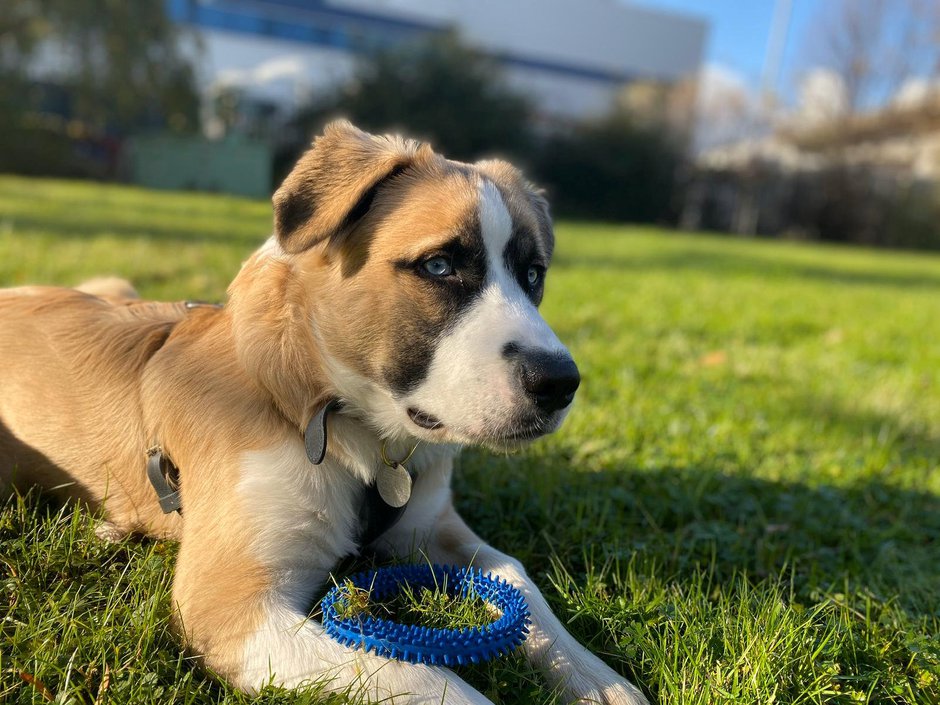 Image by: Josh Hill
Image by: Josh Hill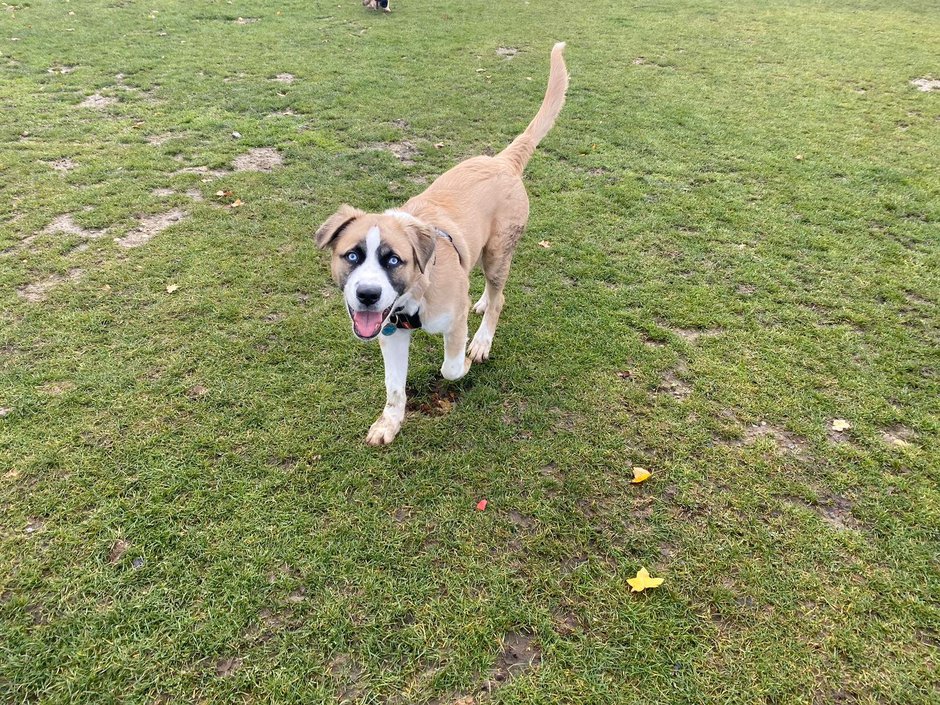 Image by: Josh Hill
Image by: Josh Hill
With Bear safely away from the smoke, Josh waited for the fire brigade and thought about how he'd tell them about his peculiar scenario.
Josh from Essex said: "I didn't care about the house I just wanted to get him out of there. It wasn't as serious as it first looked, I was just happy that Bear was okay.
"I had put some bread buns in the microwave just to put them off the surface away from Bear and just forgot about them. I usually switch everything off but obviously we don't live in a perfect world.
"I normally take Bear to work with me or I'll take him to my mum's or doggy day car but yesterday was only a short day."
On arrival the fire brigade ventilated the house opening all the windows and using a huge fan to clear out the smoke.
Thankfully Bear was not harmed in the incident and he was back to his usual self in no time.
Josh added: "I can't really explain him. He's got a lovely temperament, every Gsingle person who sees him loves him because he is so chilled out.
"He loves sleeping- we have to get him out for a walk because he's always so chill!"
'I'm A Celeb' star and aristocrat Lady C has been sacked from turning on the Christmas lights in Prince Charles' home town - after comments about Prince Andrew
 Image by: Jon Mills
Image by: Jon Mills
'I'm A Celeb' star and aristocrat Lady C has been sacked from turning on the Christmas lights in Prince Charles' home town - after comments about Prince Andrew.
Lady Colin Campbell had been set to appear at the switch-on in Tetbury, Glos., on December 6.
The posh market town is located right on the doorstep of Prince Charles' Highgrove House estate.
But the 70-year-old's appearance has now been pulled by furious organisers after she said 'soliciting sex was not the same as paedophilia'.
Appearing on ITV's Good Morning Britain yesterday (Tues), Lady C made the comment when discussing the scandal-hit Duke of York and disgraced billionaire Jeffrey Epstein.
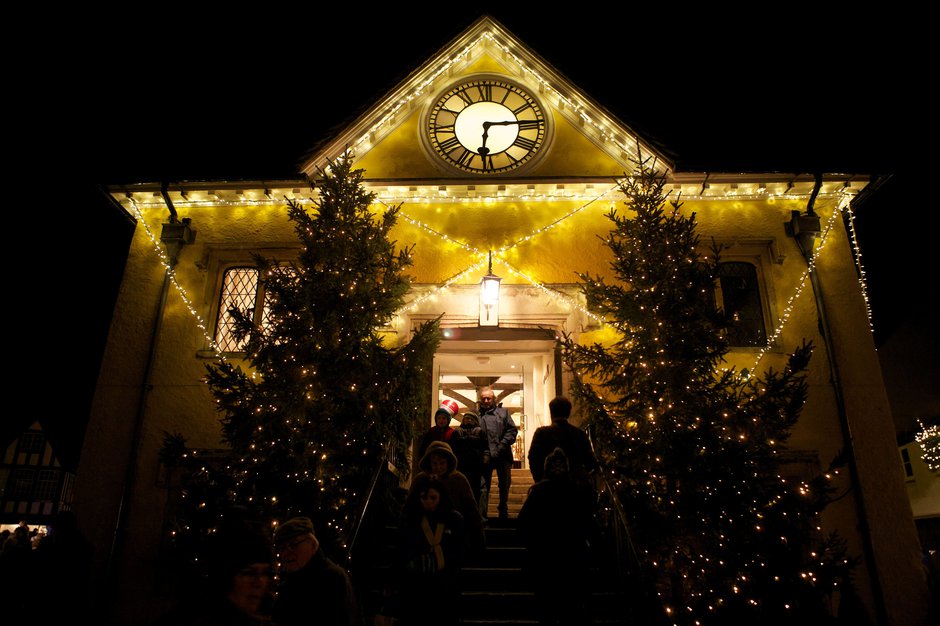 Image by: Jon Mills
Image by: Jon Mills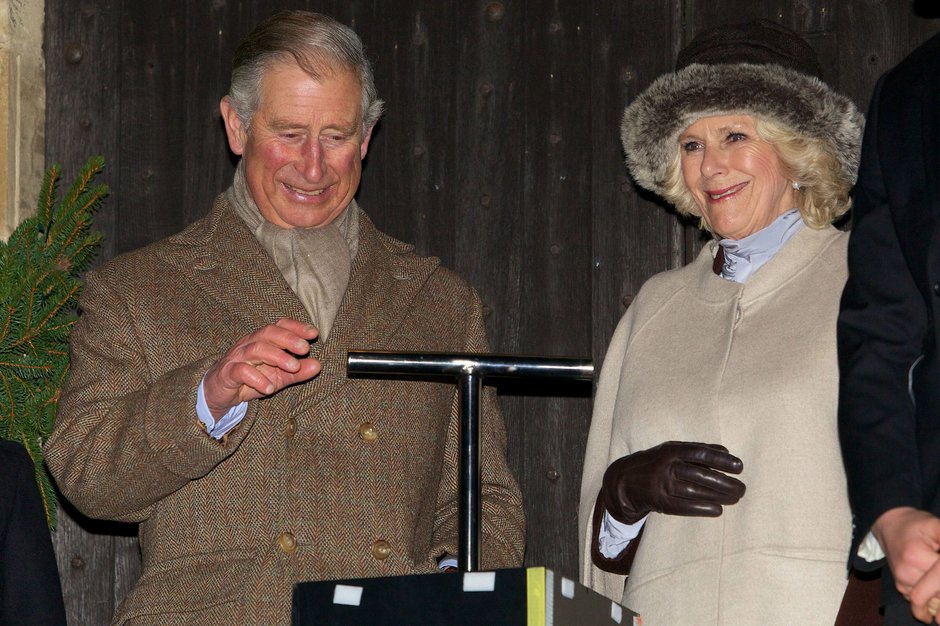 Image by: Jon Mills
Image by: Jon Mills
She said: "You all seem to have forgotten that Jeffrey Epstein, the offence with which he was charged and for which he was imprisoned, was for soliciting prostitution from minors.
"That is not the same thing as paedophilia."
A statement from Tetbury Town Council said: "The Town Council has been advised by the organisers of the Christmas Lights Switch on Event that, in view of the recent controversy, they have decided to ask the Mayor to turn on the Christmas Lights, with a pupil from St Mary’s Primary School."
The posh personality appeared on the fifteenth series of 'I'm A Celebrity...Get Me Out Of Here!', quitting the show on 'medical grounds'.
She is no stranger to controversy, having claimed earlier this year that the #MeToo movement has "prevented men from being men".
Highgrove House, the family residence of the Prince of Wales and the Duchess of Cornwall, is located just two miles from the centre of the town.
British man claims new record for running a marathon in every nation on earth in 22 months
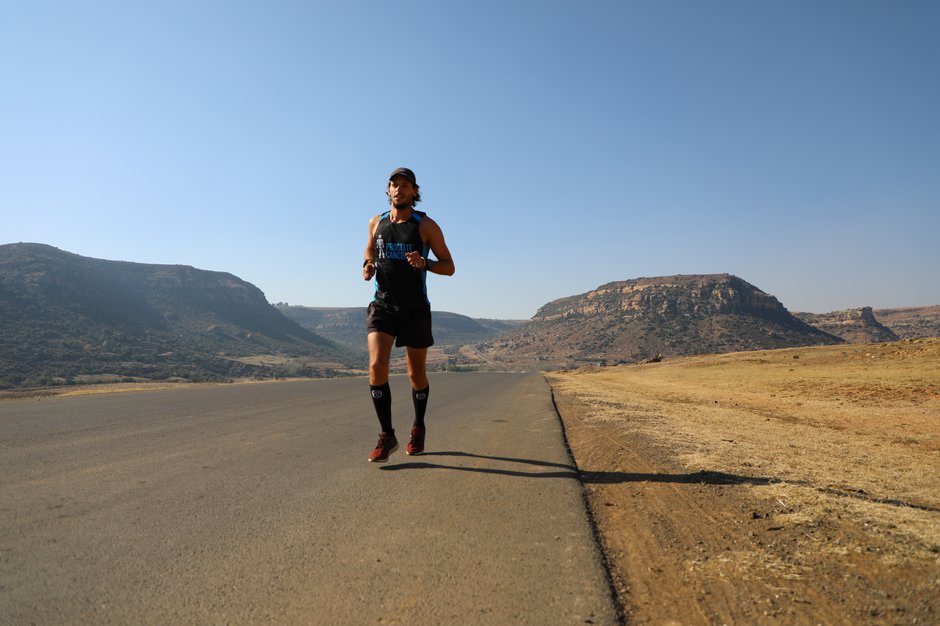 Image by: Steve Chatterley
Image by: Steve Chatterley
A British endurance athlete has set a new world record after running 196 marathons in every nation on earth in just 22 months.
Ultra runner Nick Butter, 30, quit his banking job and embarked on his solo expedition in January 2018 after being inspired by a friend with terminal cancer.
He has since covered 5,130 miles in organised events across seven continents, overcoming the extreme heat of the Sahara Desert and bitter cold of Antarctica.
Nick has averaged three marathons in three new countries every week for the last 96 weeks - burning an estimated 1.5 million calories in 5.1 million steps.
During the 675-day adventure he has been hit by a car, bitten by a dog, broken his elbow and even been shot at.
Today he completed the final event - the Authentic Marathon in Athens, Greece - making him the first man in history to complete the feat of running a marathon in every nation.
He hopes to raise a total of £250,000 for Prostate Cancer UK.
Nick, of Dorset, said: "It's been the most incredible experience, I've seen things you wouldn't even imagine as I've run across the world.
"It took two years to plan which was really daunting, sorting out all the logistics and organising the flights and everything.
"Over the past 18 months, I've been through 10 passports and something like 120 Visas, I've lived in airports and hotel rooms, it's just been a total whirlwind.
"It's been such an eyeopening adventure.
"I thought the sights would be the best part of this experience but it's actually been the people - I've got around 2,000 new contacts in my phone from people I've met across the world.
"Sure, the views I've seen have been breathtaking - but it's the little kids running next to me wanting to hold my hand in some country I've never heard of before in Africa that has been the most amazing bit for me.
"It's gone so fast, yet at the same time feels like I've been doing it forever, it's a weird reality and I can't believe I'm at the finish line."
Nick has always been a keen runner, taking part in marathons across the globe, but his world changed in 2016 when he met fellow runner Kevin Webber during the Marathon Des Sables in Morocco.
He was immediately drawn towards Kevin's positive attitude and bubbly personality, but as he got to know him over the gruelling five-day event, Kevin dropped the bombshell that he had terminal cancer.
After being diagnosed with prostate cancer in 2014 and told he had two years to live, Kevin had set off running marathons across the world to raise money for Prostate Cancer UK.
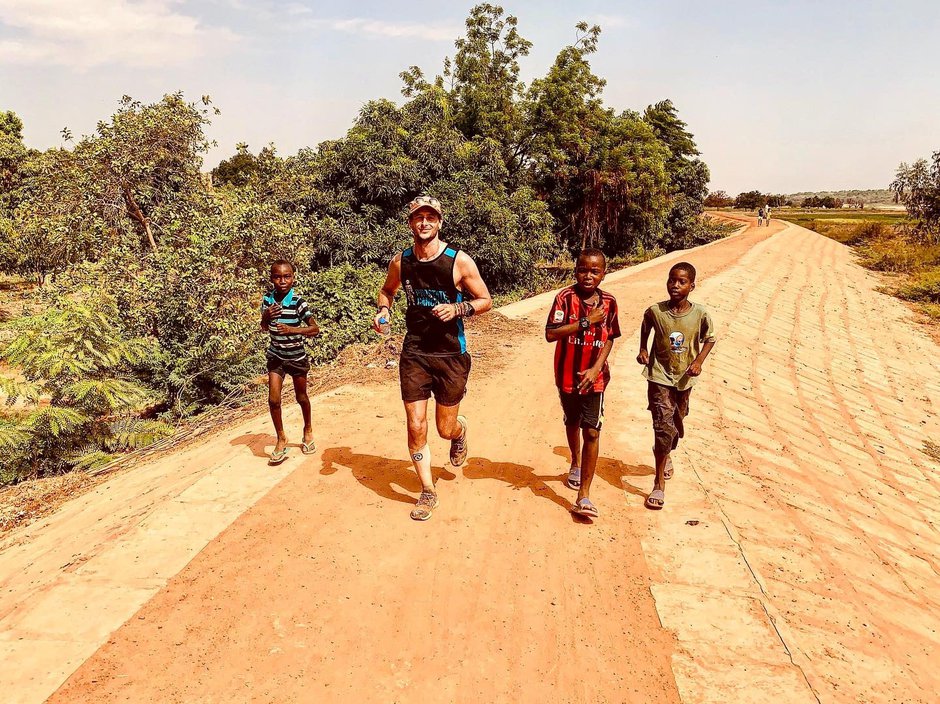 Image by: Steve Chatterley
Image by: Steve Chatterley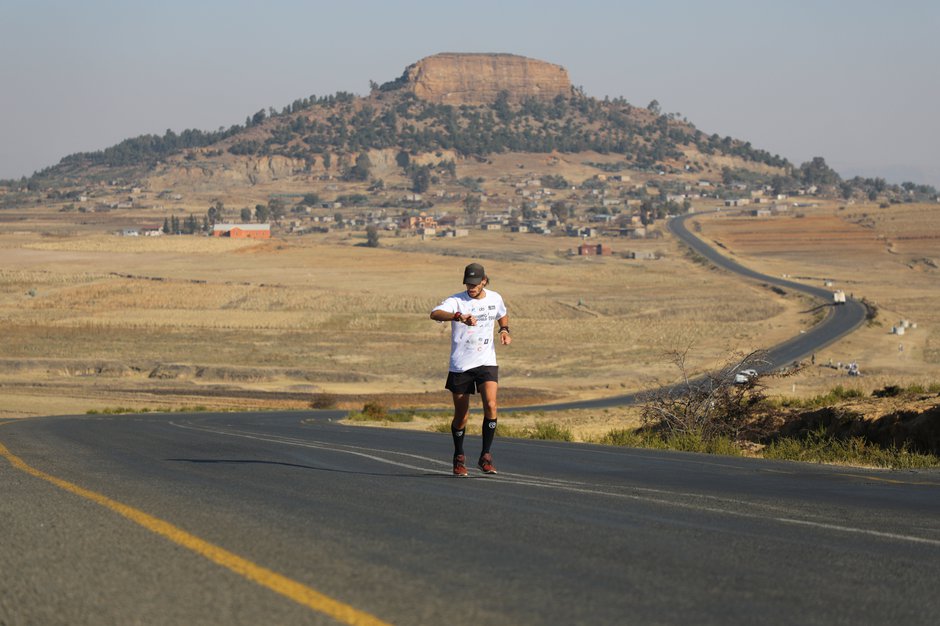 Image by: Steve Chatterley
Image by: Steve Chatterley Image by: Steve Chatterley
Image by: Steve Chatterley Image by: Steve Chatterley
Image by: Steve Chatterley
Nick said: "I couldn't believe that this guy, who always seemed so happy and full of life, had just told me he had terminal cancer.
"I was shocked, and when Kevin told me 'Don't wait for the diagnosis' it really struck a chord with me and I just knew I had to do something to raise money for the charity.
"Kevin changed my life that day and in the months that followed, I quit my job at the bank and swapped my suit for running shorts forever.
"People wait so long to live their dreams tomorrow, but tomorrow might not come, and Kevin's words motivated me to get out there, see the world and do what I'm really passionate about whilst raising money for charity.
"I took my camera along on my journey as I'm a keen photographer as well, and I've got photos and souvenirs from across the globe - it's been incredible."
Nick raised an initial £46,000 in donations to cover his costs and started his adventure running in -25 degrees Celsius in snowy Toronto, Canada in January 2018.
During his travels he carried everything he needed to survive, camping wild or bedding down with supporters.
He took 201 flights covering 13,500 miles between countries, along with 45 train journeys, 15 buses and 280 taxis.
Since setting off he has raised a further £63,000 for Prostate Cancer UK on his Just Giving page as well as about £20,000 in external donations.
With two books planned to be released in 2020 and a 1,000 day running expedition in the pipeline for 2021, Nick has set himself up for a busy return to his home in Dorset.
Set to run the circumference of Iceland in July 2020, he's not hanging up his running shoes just yet and is embarking on a speaking tour to inspire others to follow their dreams.
Nick said: "I'm looking forward to going out to schools and sharing my experience with others to hopefully inspire them to pursue what their passionate about.
"I've learnt so much about other countries and cultures throughout my journey, and the idea of teaching kids about things like a Nepalese prayer wheel is just amazing to me.
"The average human lives for 29,747 days, and if you're British, you spend about 9 years watching television, so it's interesting to get people thinking about how much time you waste not doing something you're truly passionate about.
"You don't know when you're time is going to run out, so get out there and chase your dreams today - as Kevin said, don't wait for the diagnosis."
Nick is continuing to raise money for Prostate Cancer UK and has a Just Giving page set up to help him reach his £250,000 target.
Just Giving - https://www.justgiving.com/fundraising/runningtheworld
GREATEST SHOWMAN - This is the moment superstar Hugh Jackman went 'full Wolverine' for one of his biggest fans during a show
 Image by: Taylor Van Engen
Image by: Taylor Van Engen
This is the moment Hugh Jackman delighted a front row fan during a concert by grabbing his phone and recording an epic Wolverine tribute.
Taylor Van Engen, 29, was standing in front of the stage during Hugh Jackman's singing and dancing tour and screamed in delight as the showman did a Wolverine pose.
His reaction caught the attention of the X-Men actor who walked over and went "full Wolverine" - growling and shouting into Taylor's phone.
Taylor can be seen jumping up and down uncontrollably before Jackman hugs him and says: "You've waited one-and-a-half hours for that moment!
"For that moment! I love you brother!"
 Image by: Taylor Van Engen
Image by: Taylor Van Engen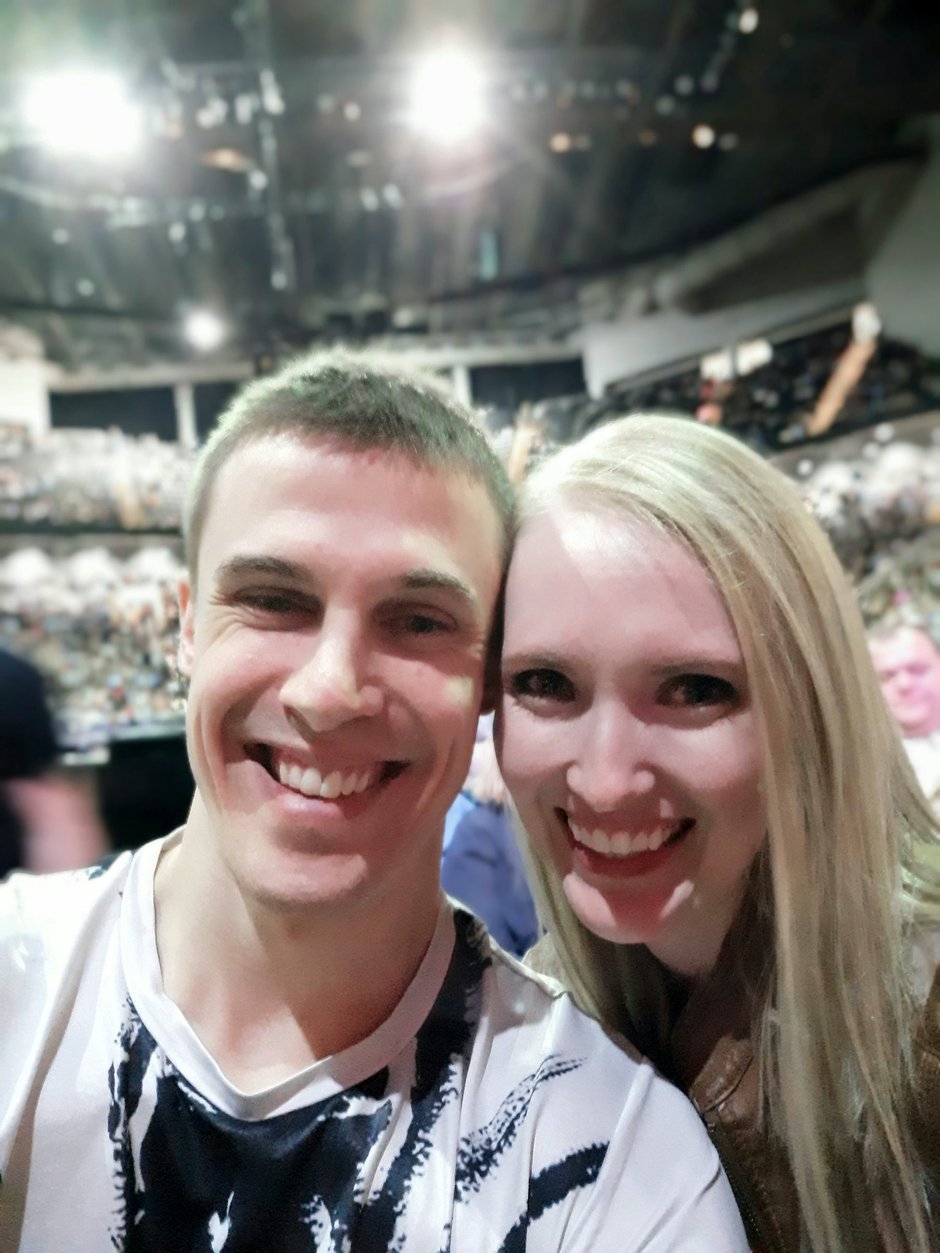 Image by: Taylor Van Engen
Image by: Taylor Van Engen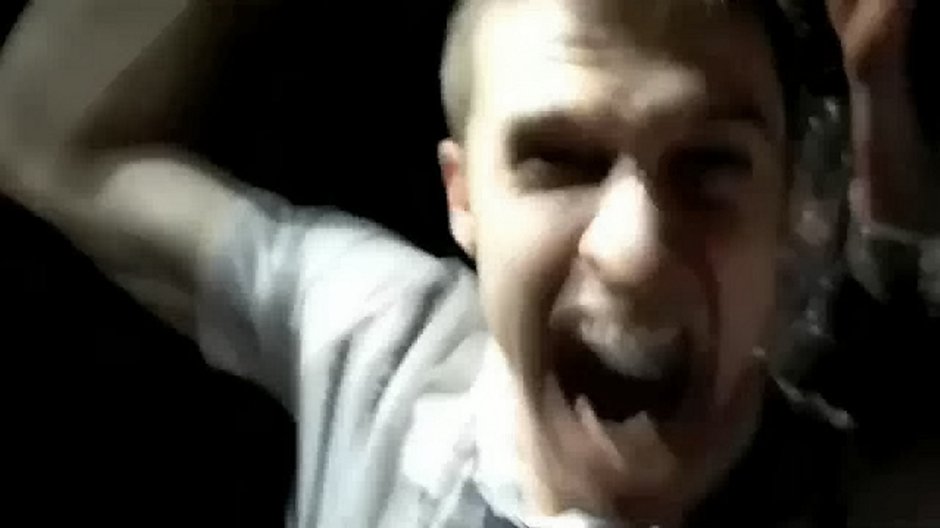 Image by: Taylor Van Engen
Image by: Taylor Van Engen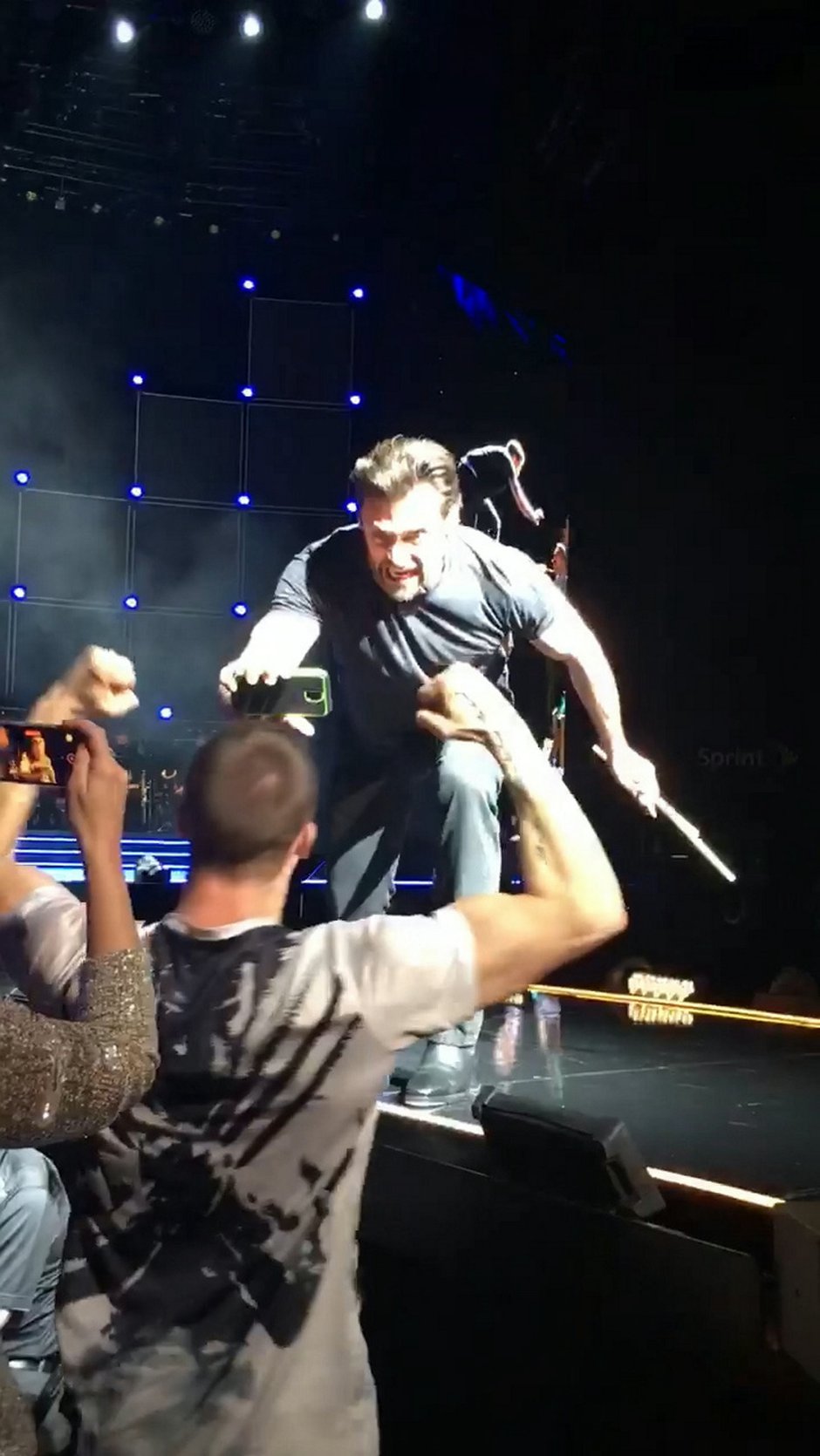 Image by: Taylor Van Engen
Image by: Taylor Van Engen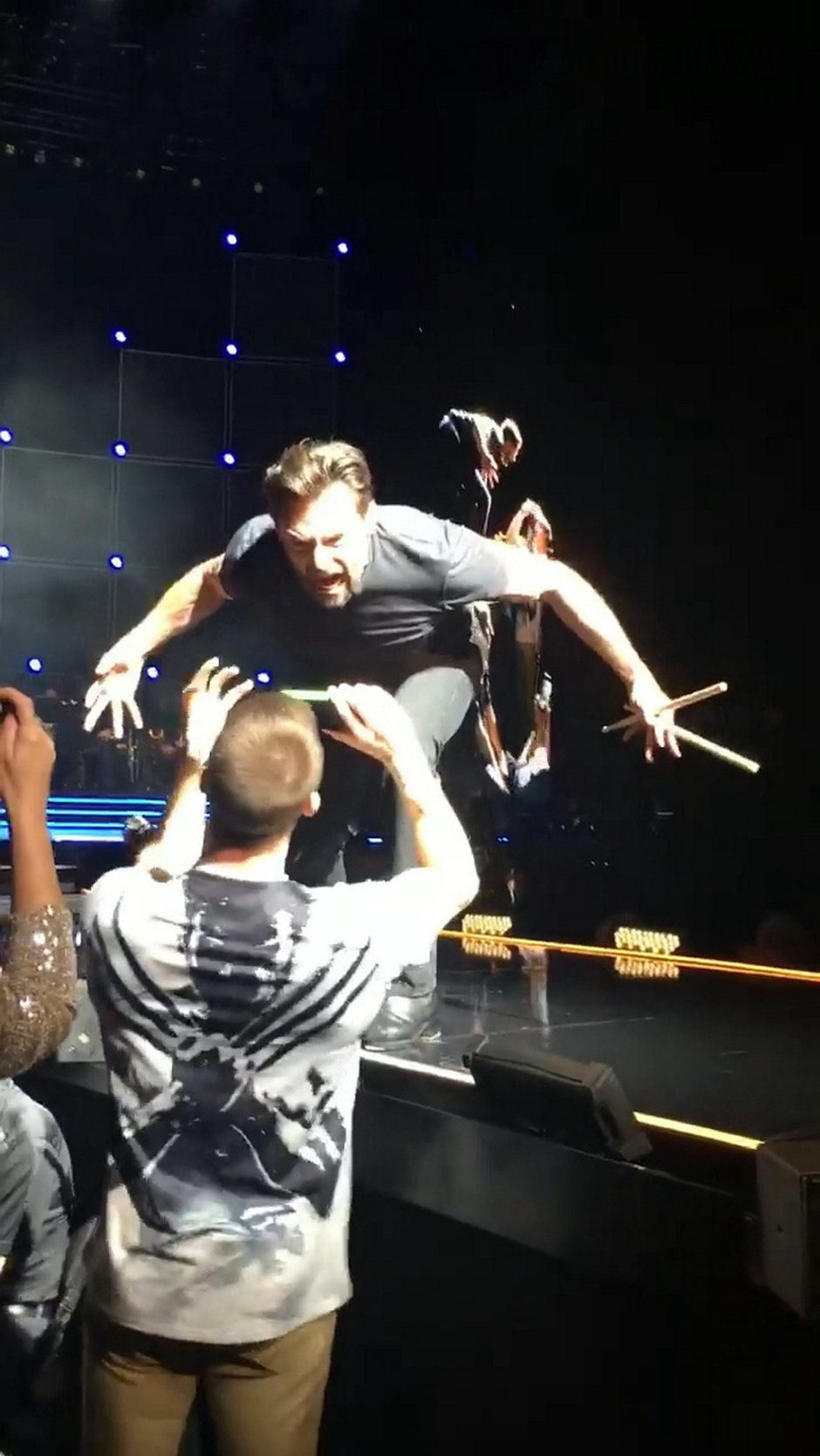 Image by: Taylor Van Engen
Image by: Taylor Van Engen
Postman Taylor said: "I lost sleep because I was too excited. For a week, I watched the videos we took and videos from other people's perspectives over and over again.
"During the intermission, I told my wife that I knew the Wolverine pose was coming - and I was gonna be ready for it.
"Hugh was going to do his tap routine, finish with the drums, then kick it out of the way.
"I was going to walk up to the security guard in front of us, stop there so they knew I wasn't going to be trouble - and Hugh did the rest.
"After the show, a few people shared their videos and pictures with us, and several others congratulated me.
"Even more would point me out and go - 'that's him, that's the guy!'
"I still like the fact that someone even referred to me as Wolverine to get my attention."
Taylor, from Rock Valley, Iowa, has taken his wife Sarah, a social worker, to see Jackman's show 'The Man. The Music. The Show.' twice this year.
He's has been a massive Hugh Jackman fan since he was 10, and has gone to the cinema to watch every X-Men film made.
His close encounter with the actor came when he went to see the show at the Sprint Center in Kansas City, Missouri, on October 13.
He said he wanted to get close enough to give Hugh a 'high five'.
As the lights went down, Hugh posed as mutant Wolverine from his X-Men movies - leading to cheers from the crowd.
Taylor went wild, shouting at the top of his lungs to attract Jackman's attention.
Taylor said: "One security guard came up to me and said that Hugh didn't do all of that for every show.
"He said it was special and really awesome. I totally agree."
Video by: Gabriella Petty


